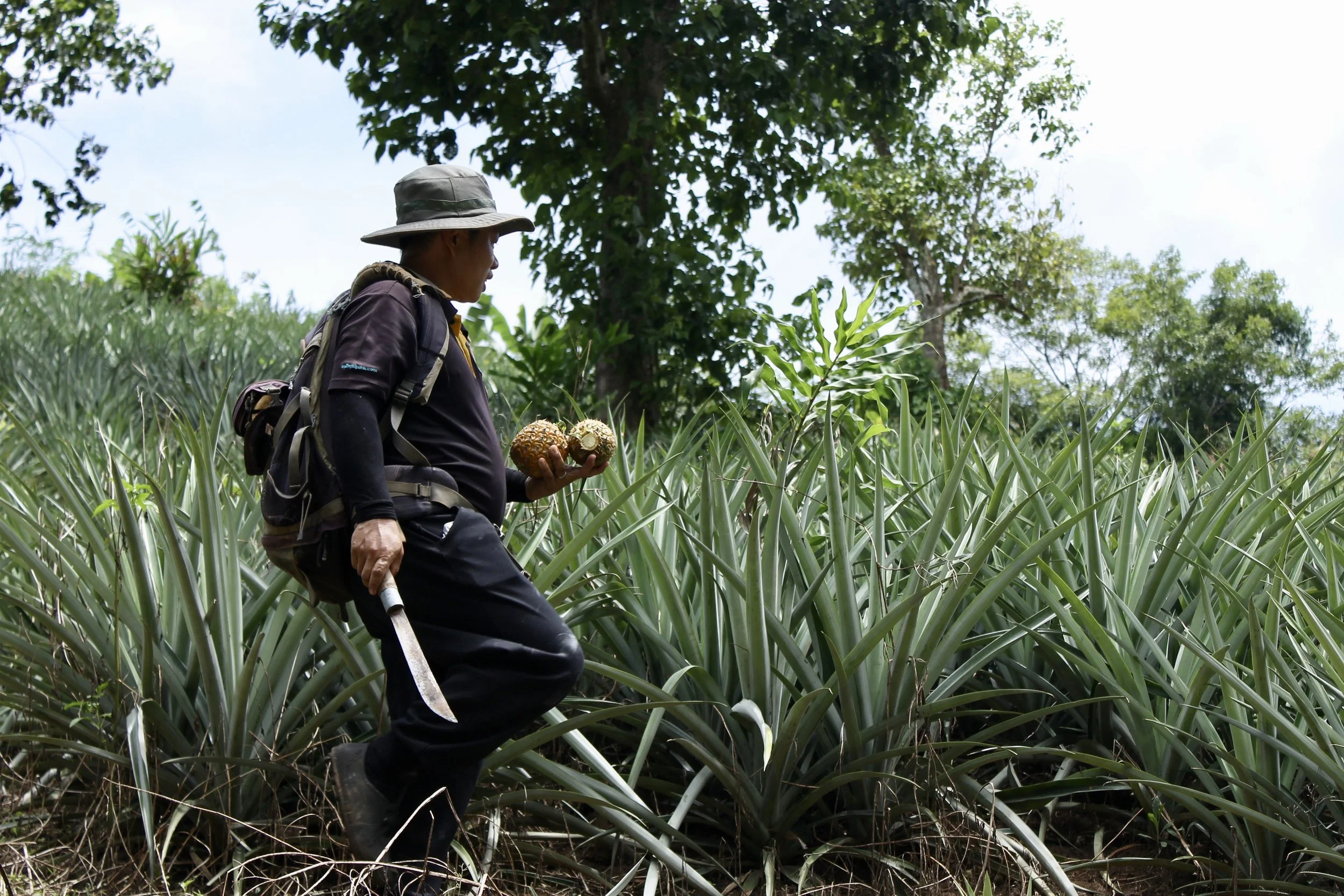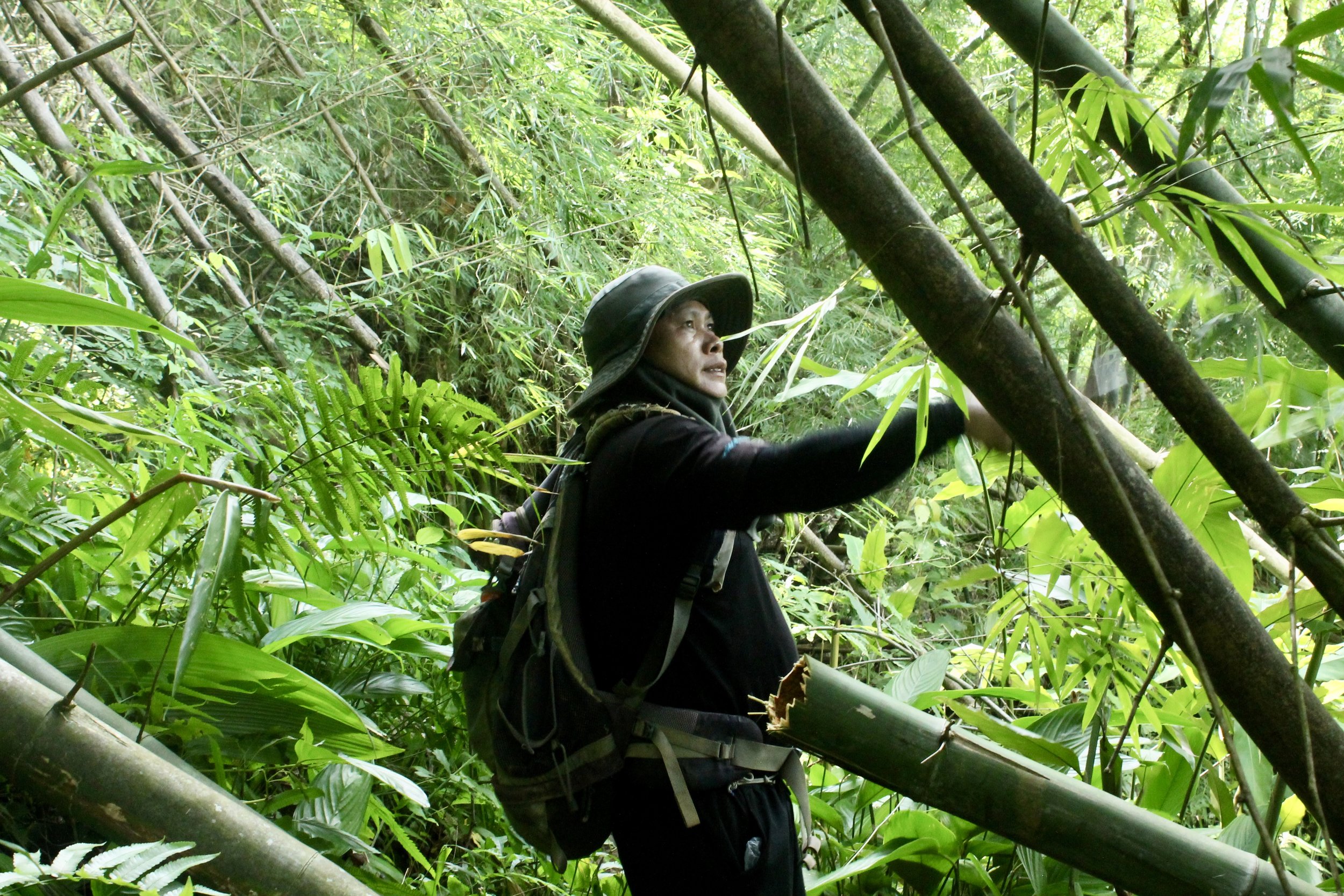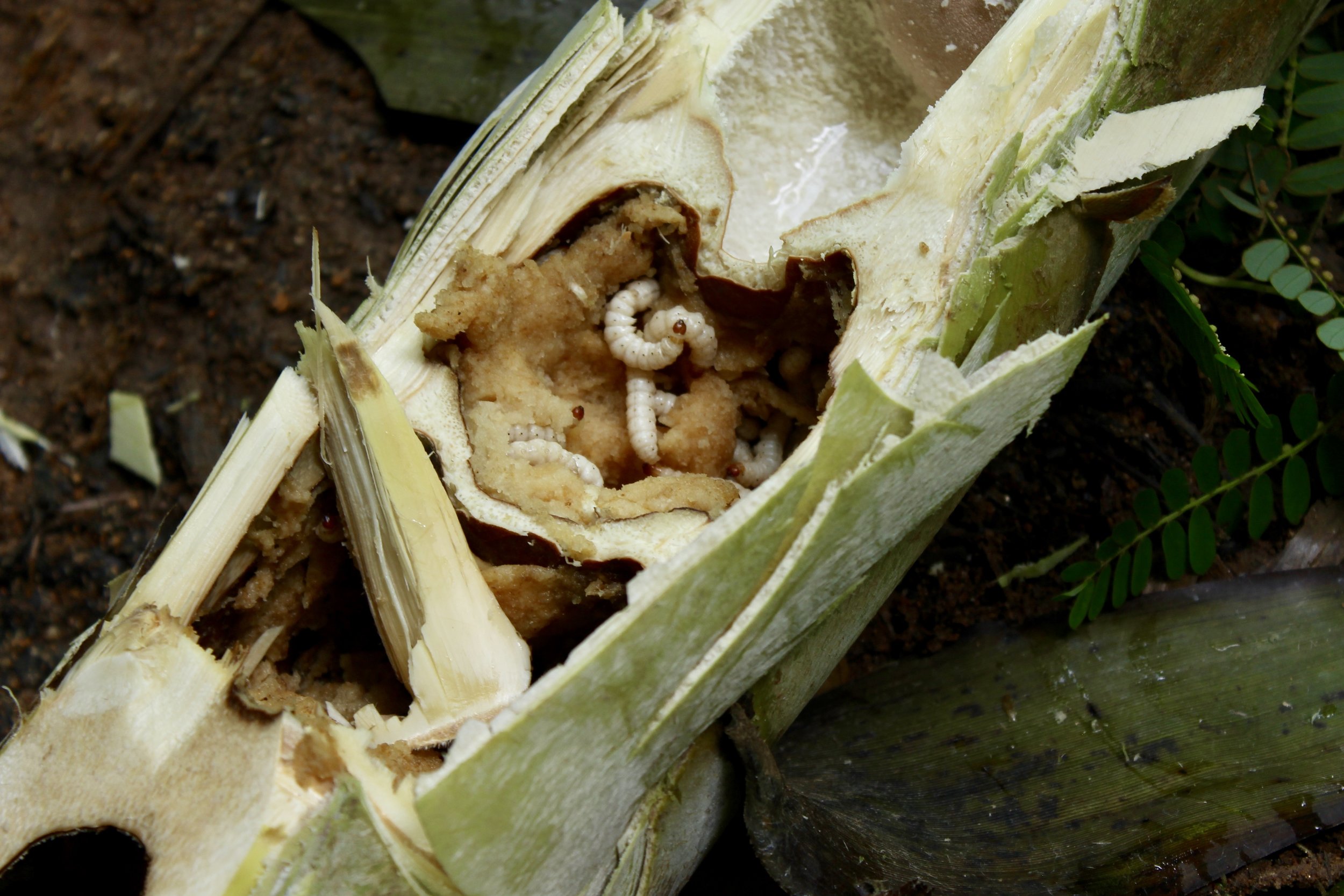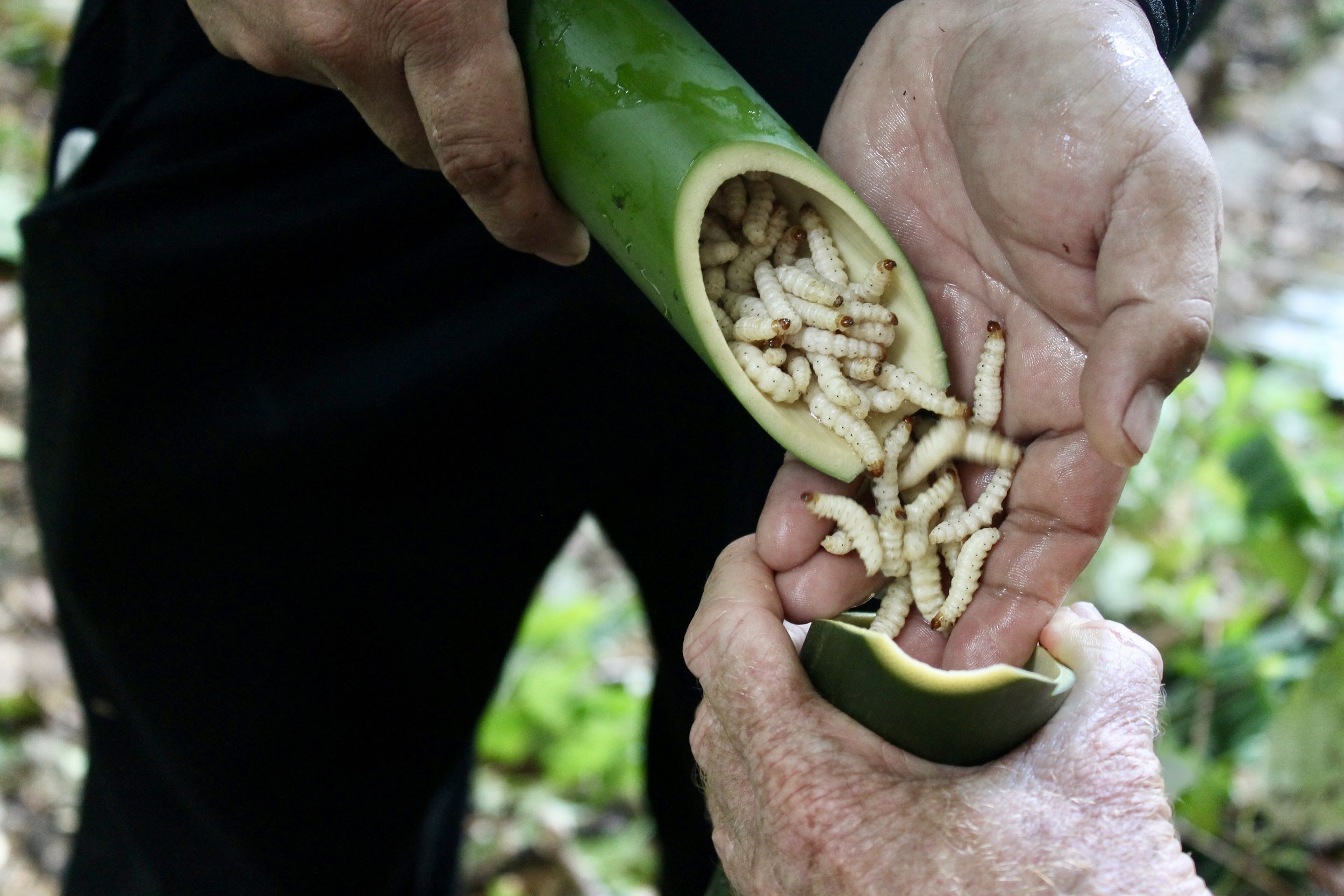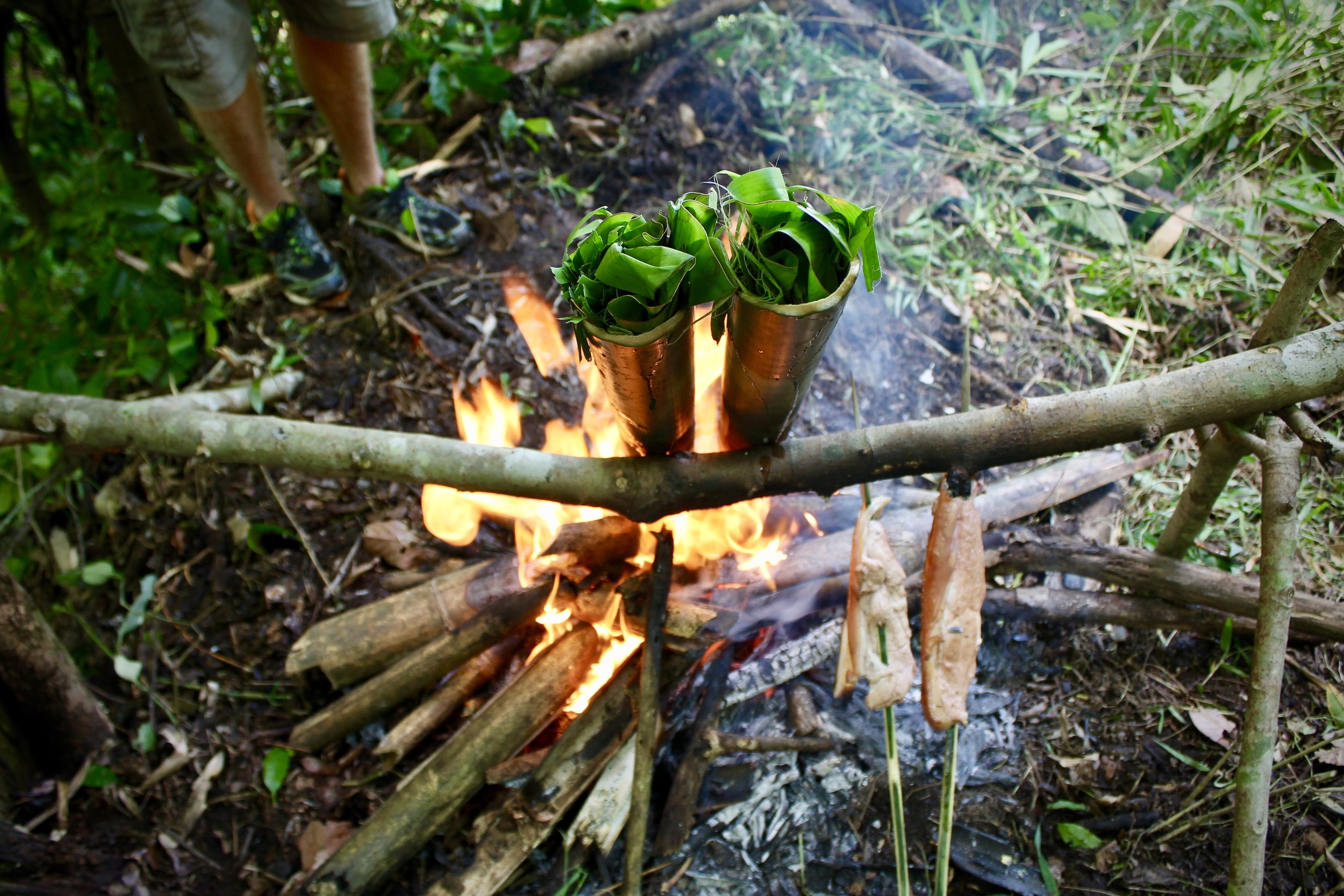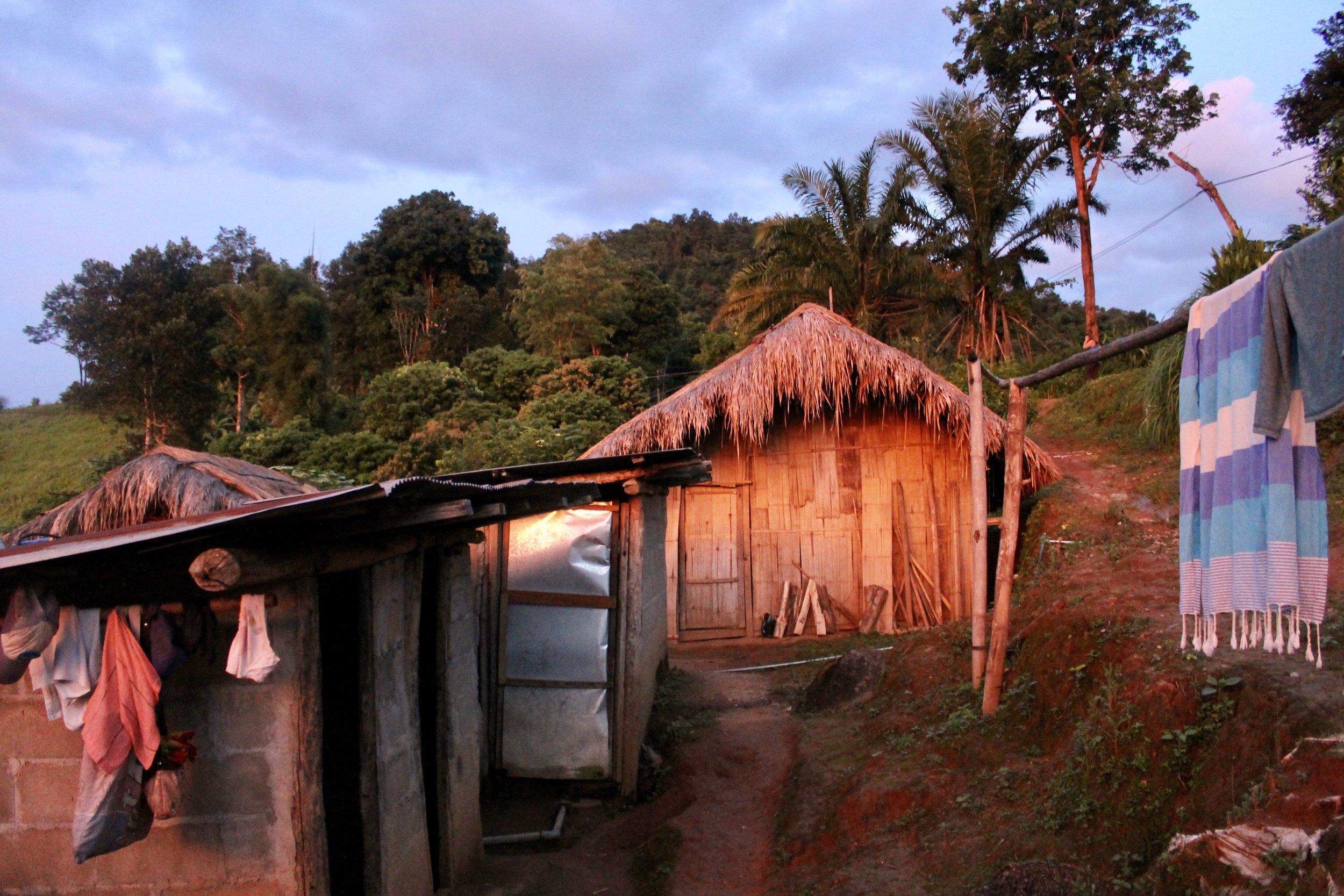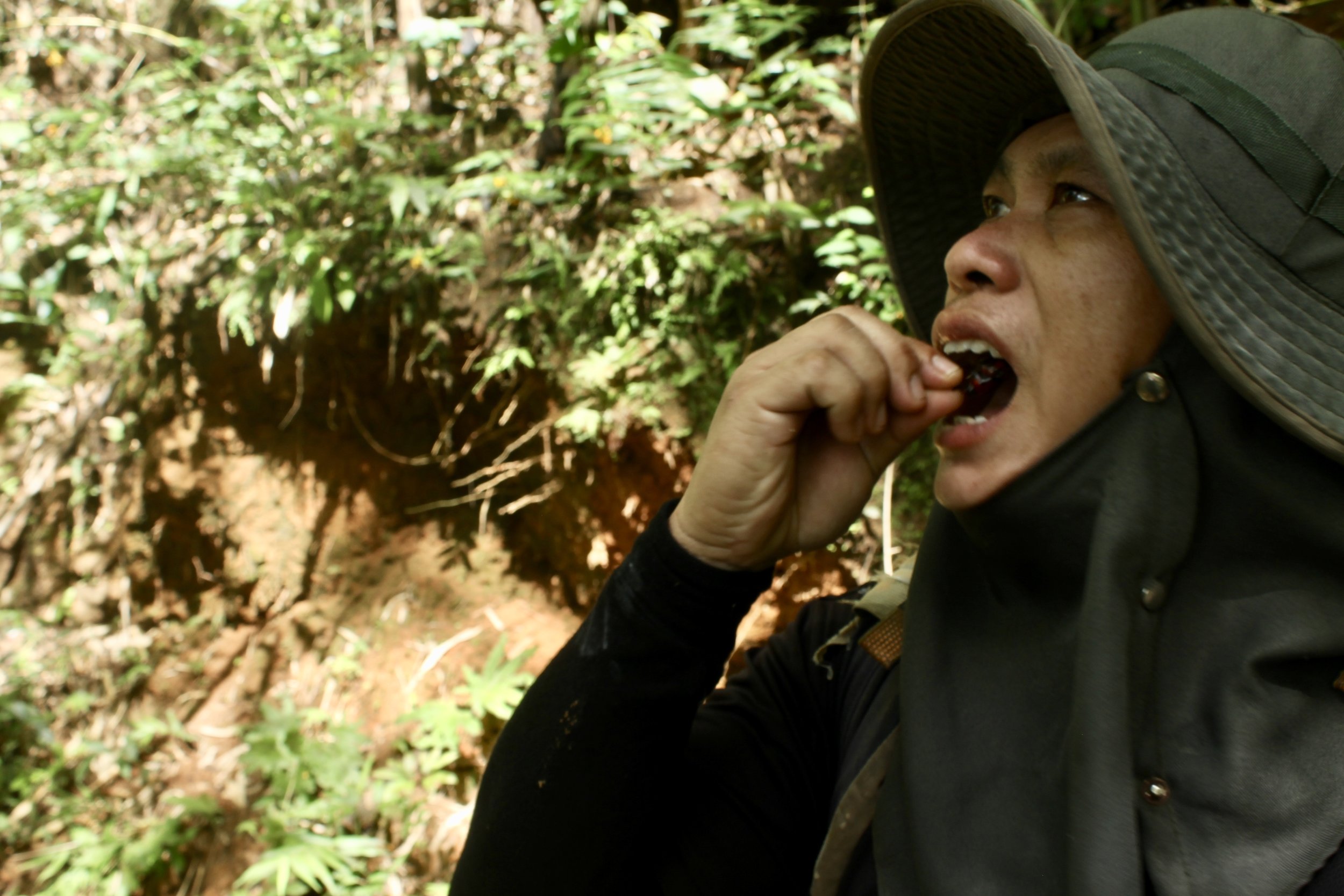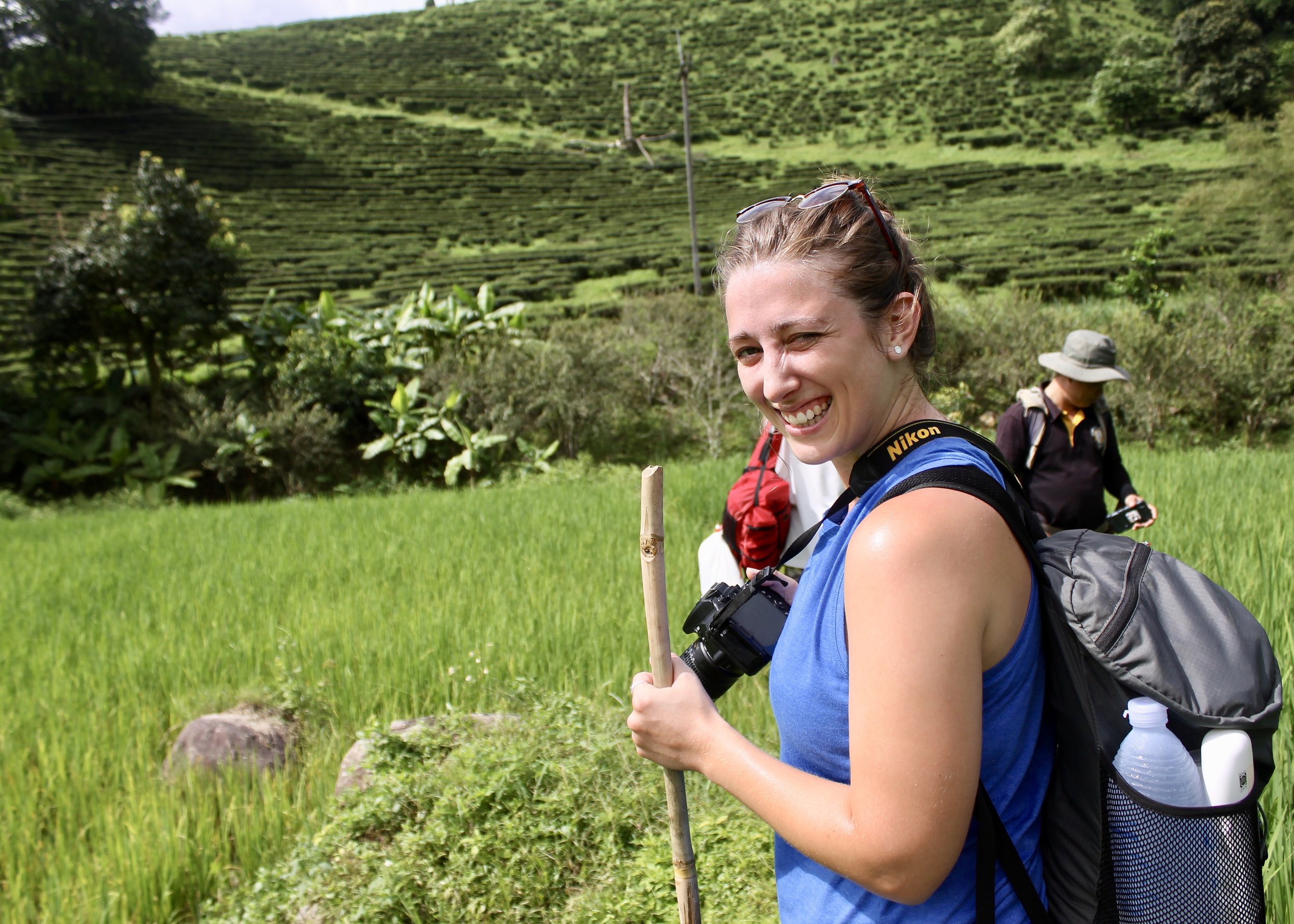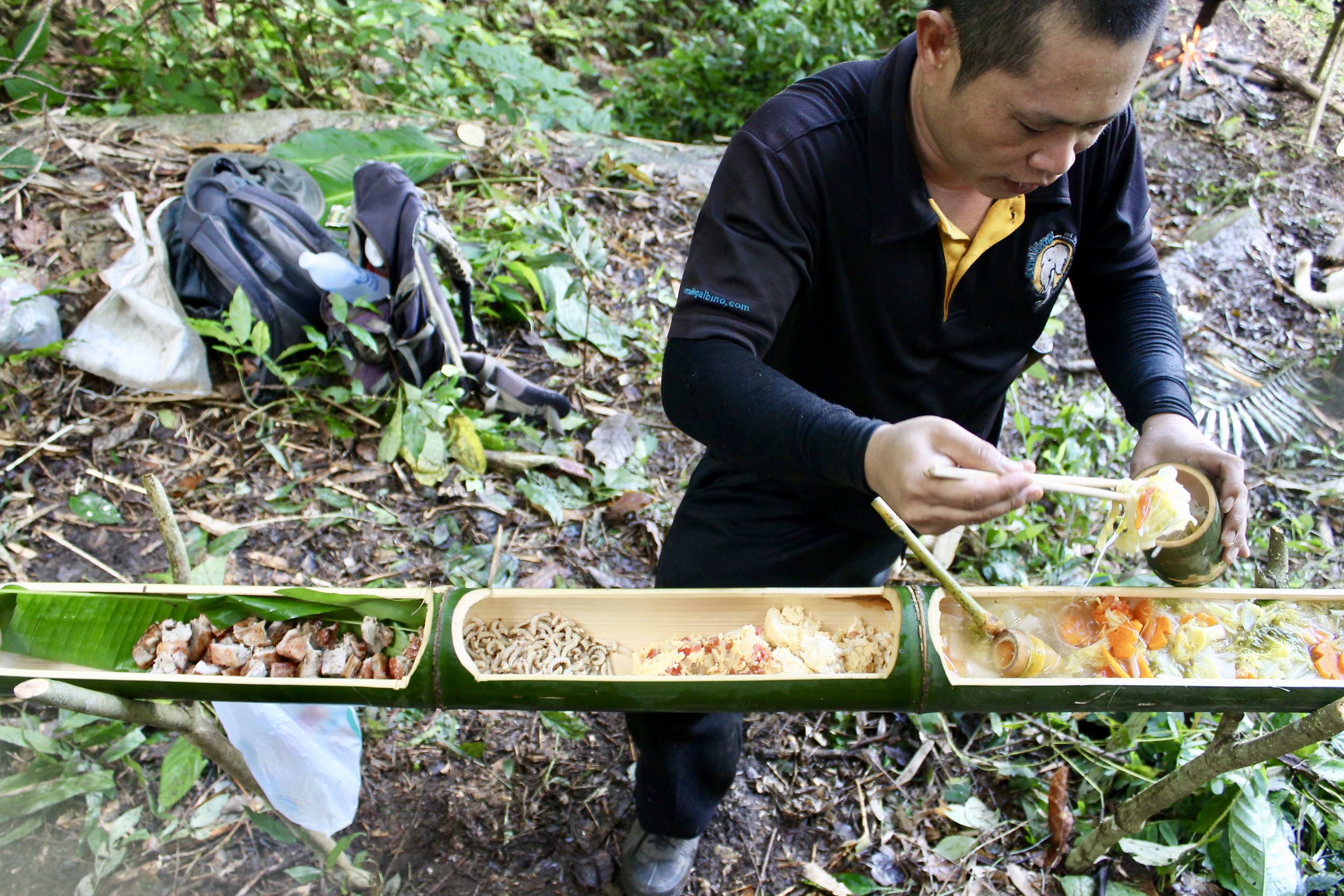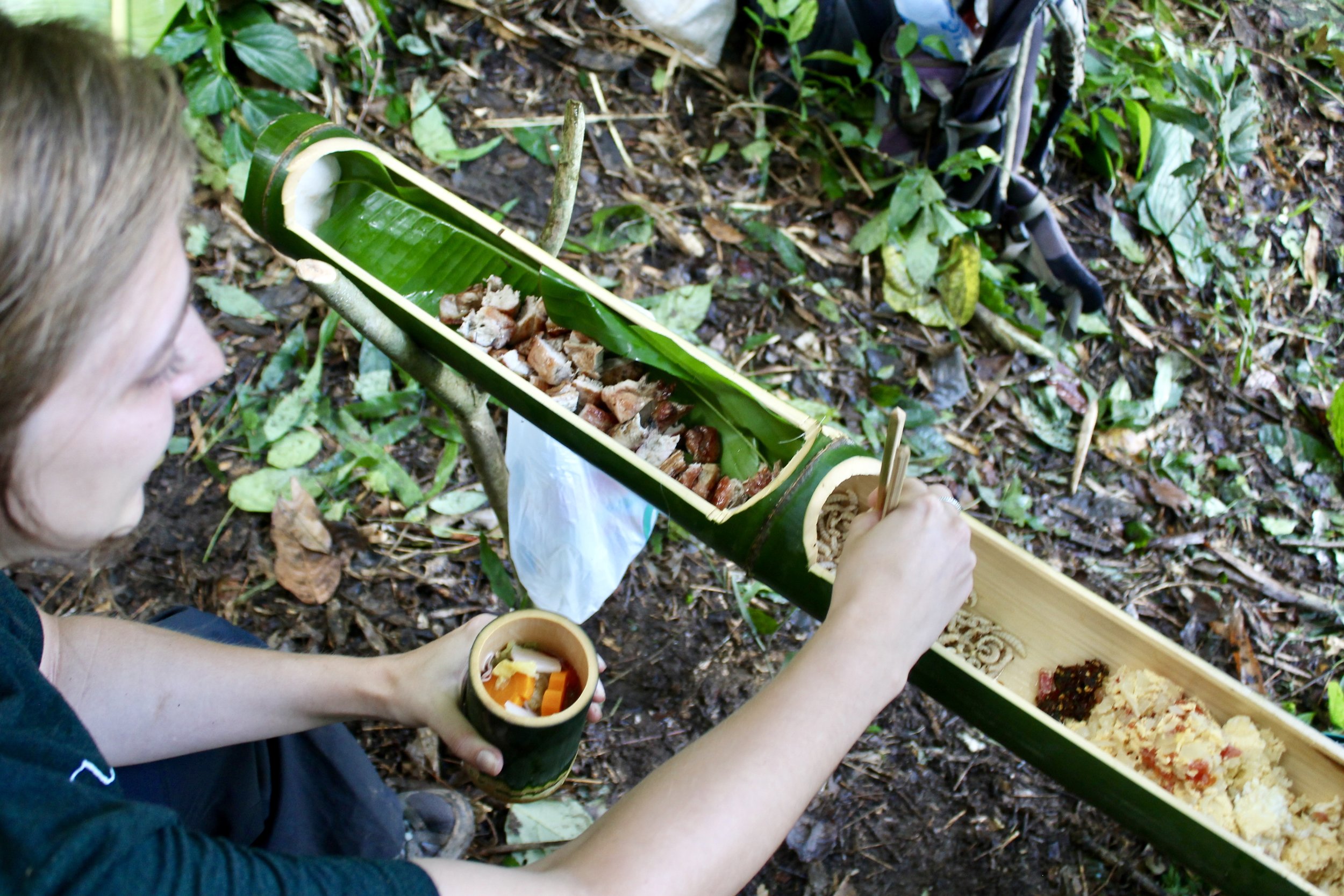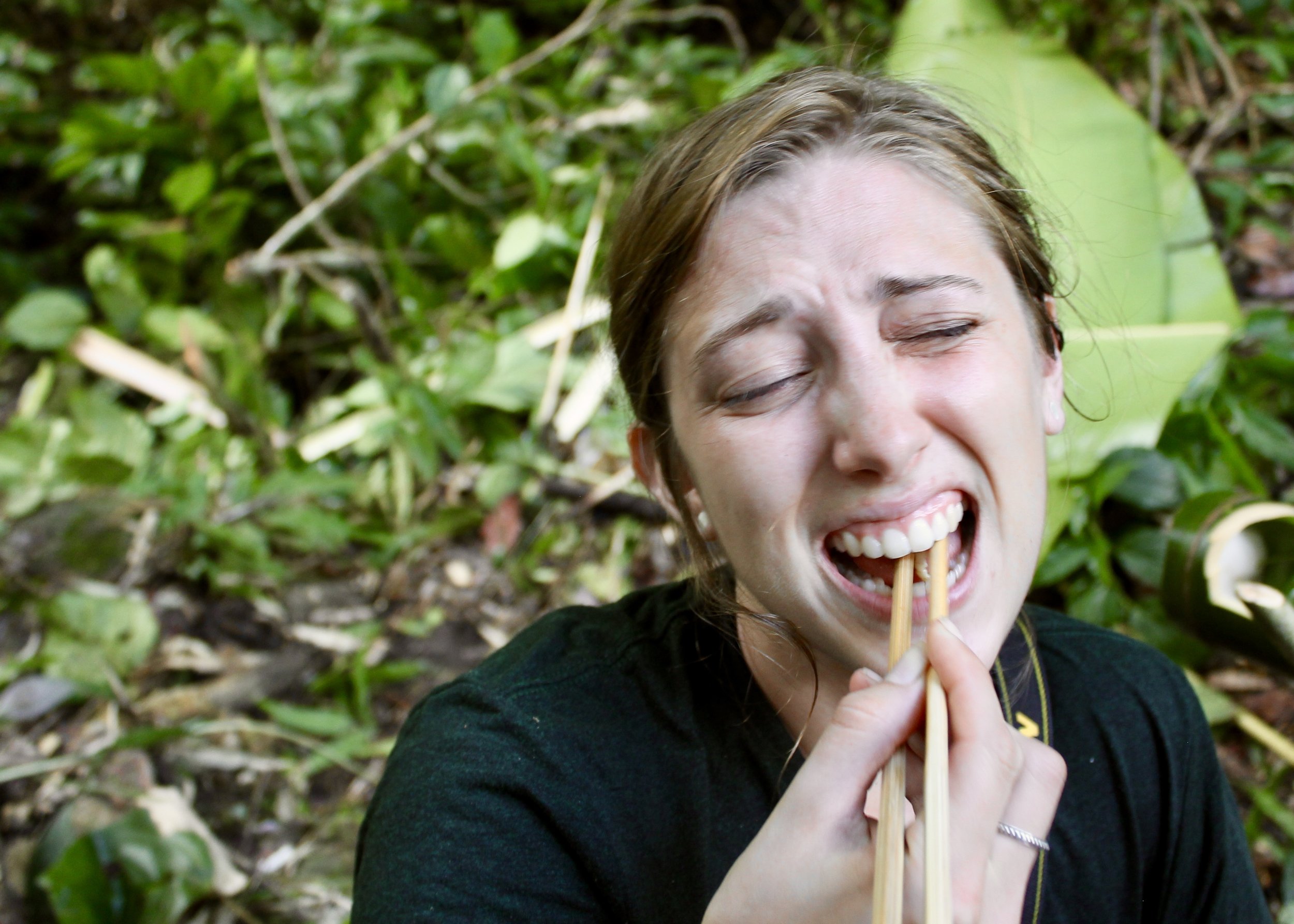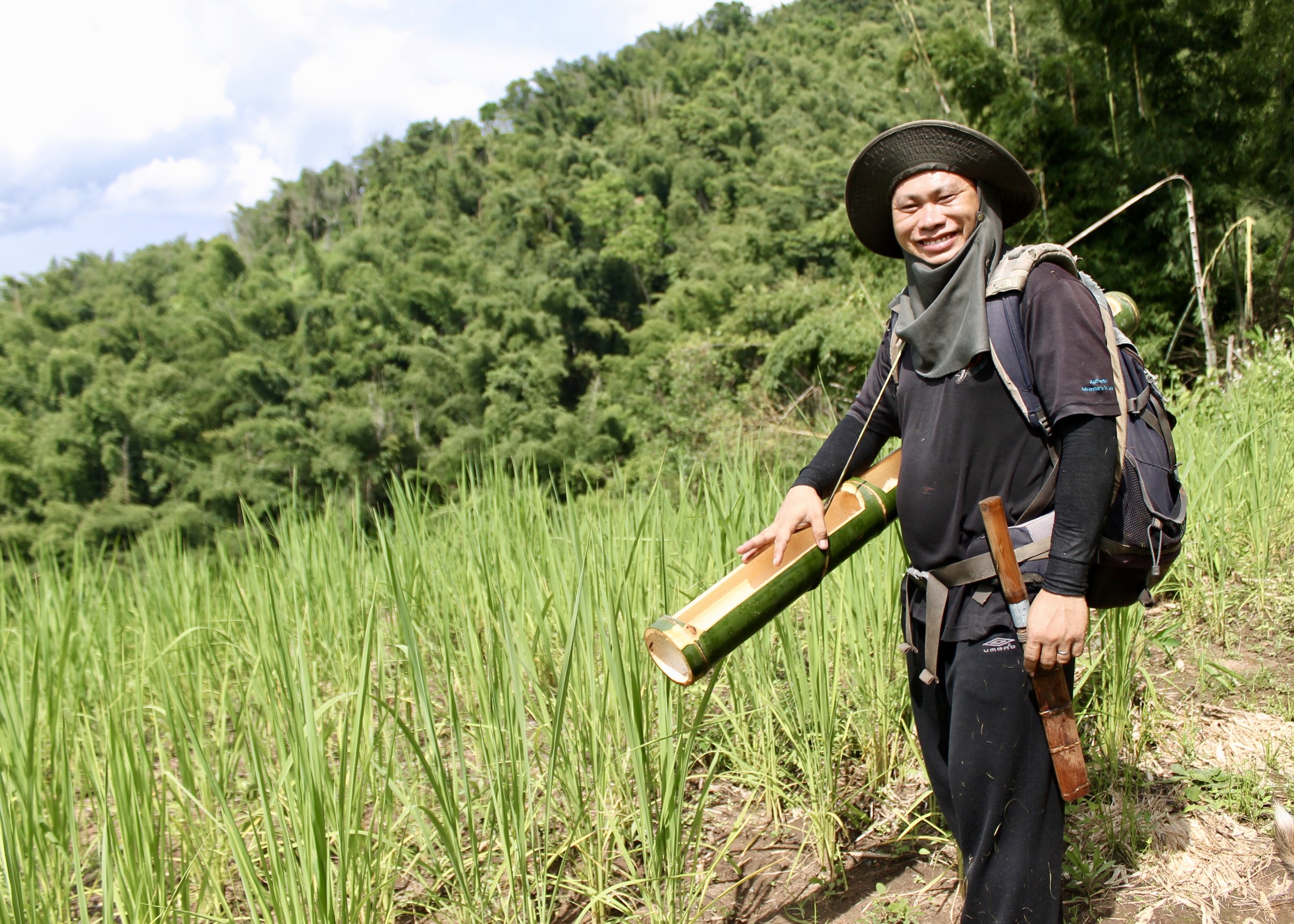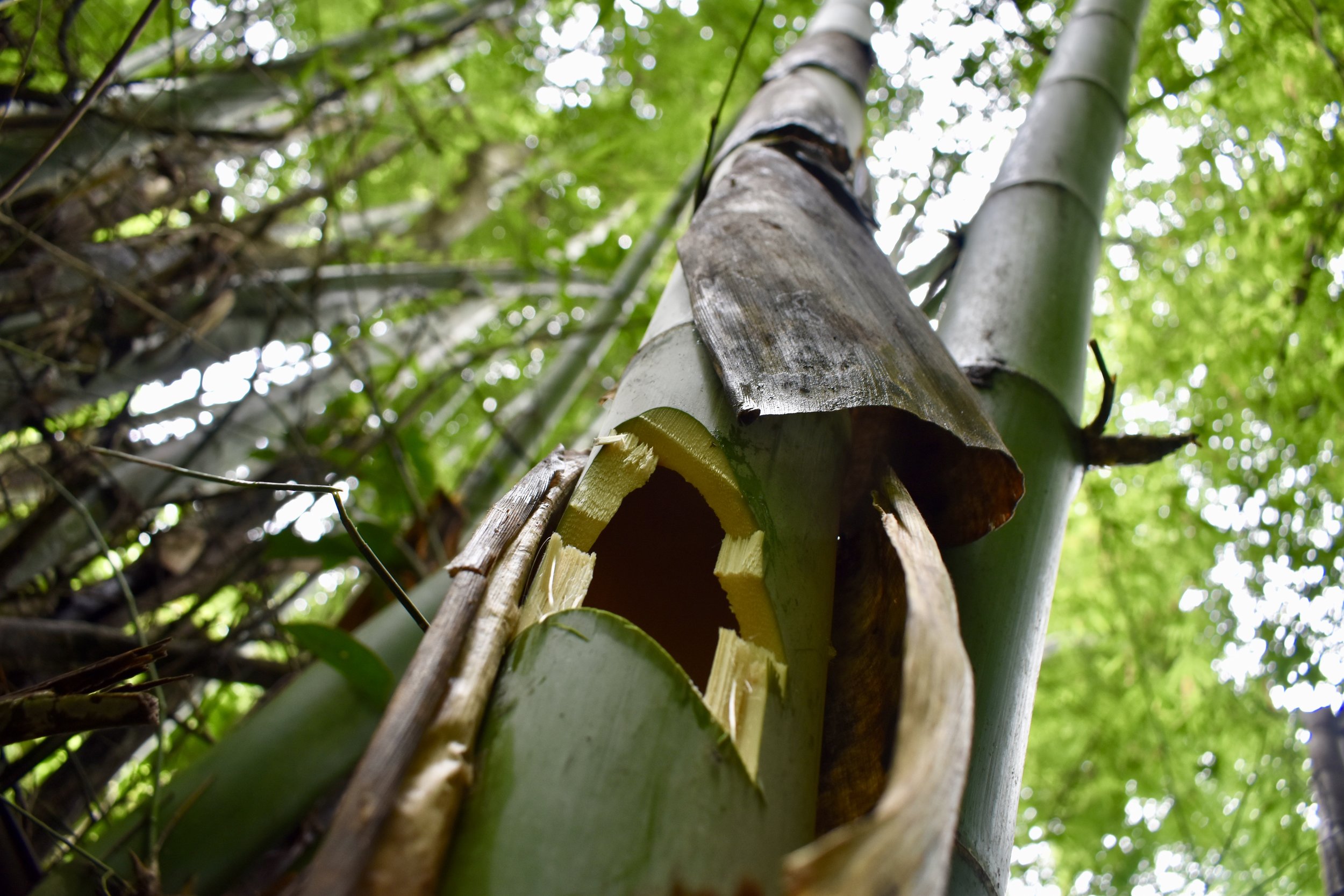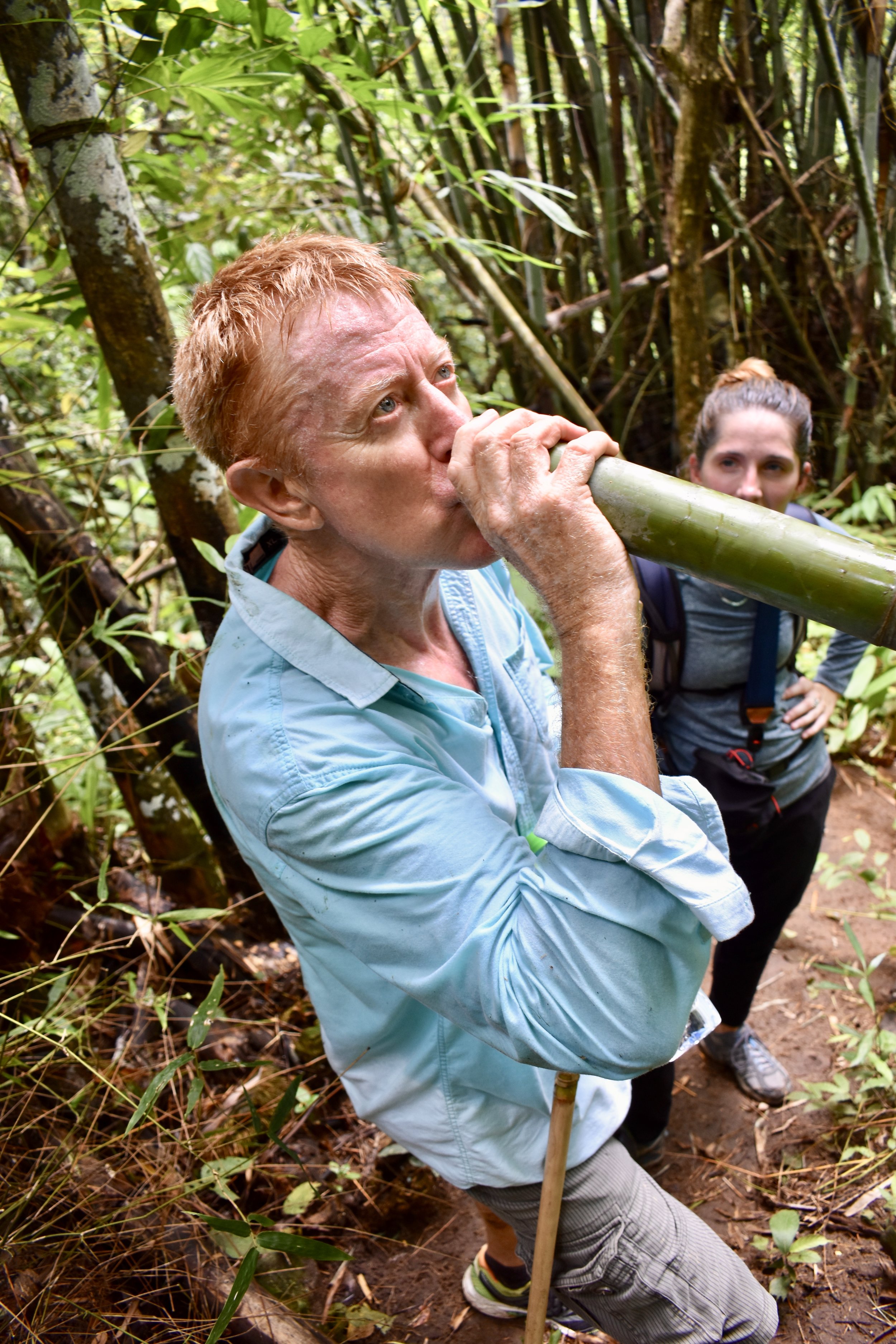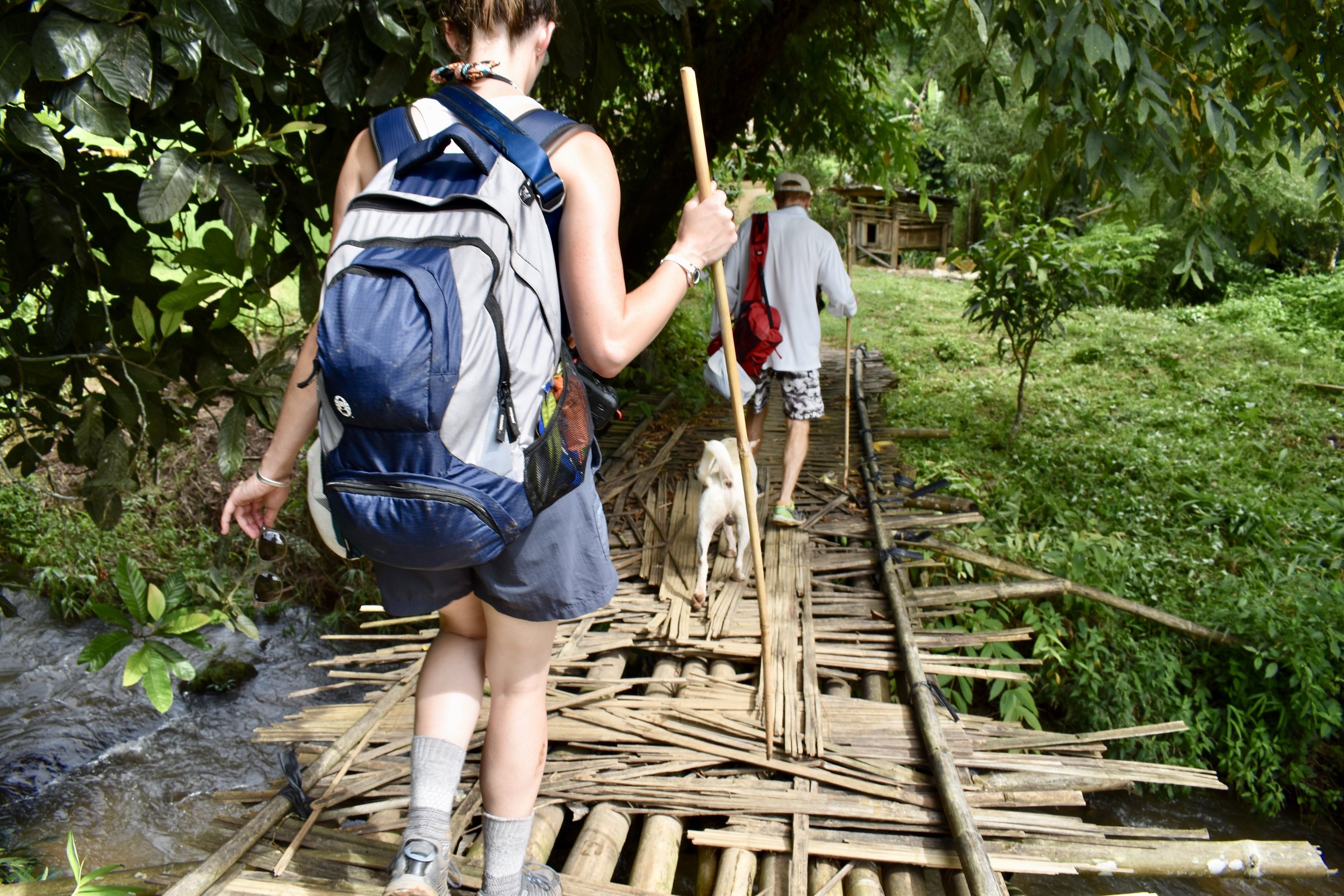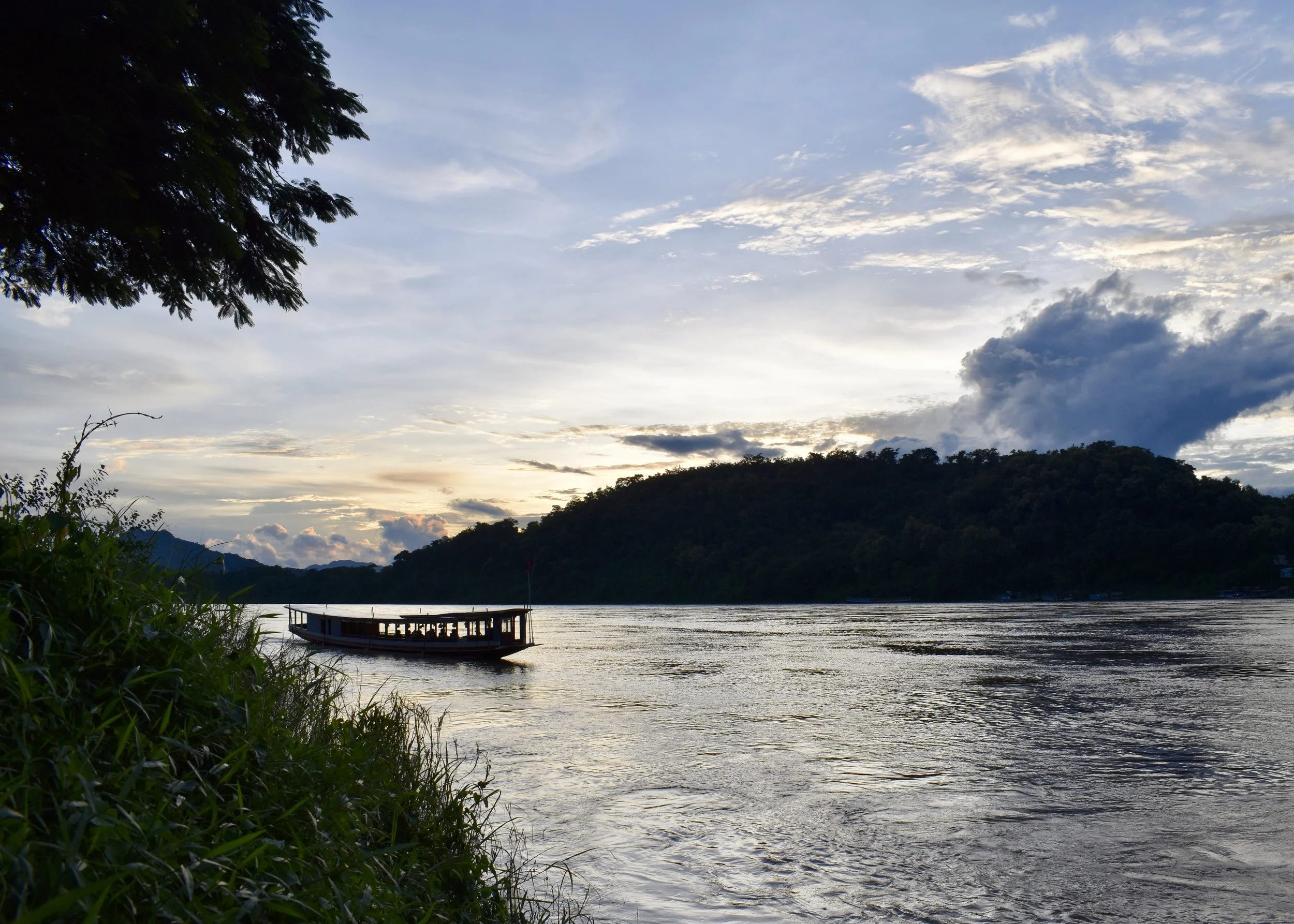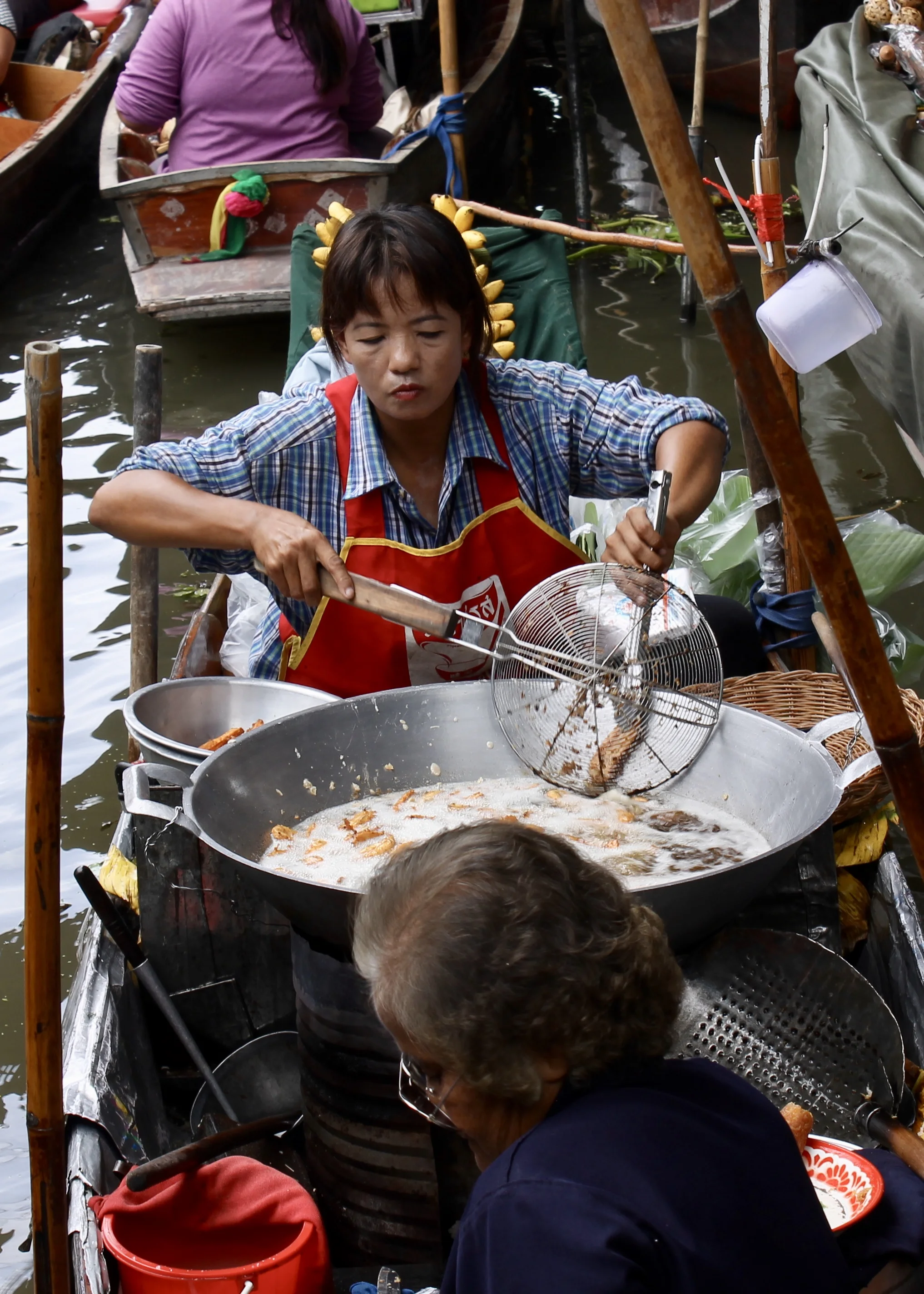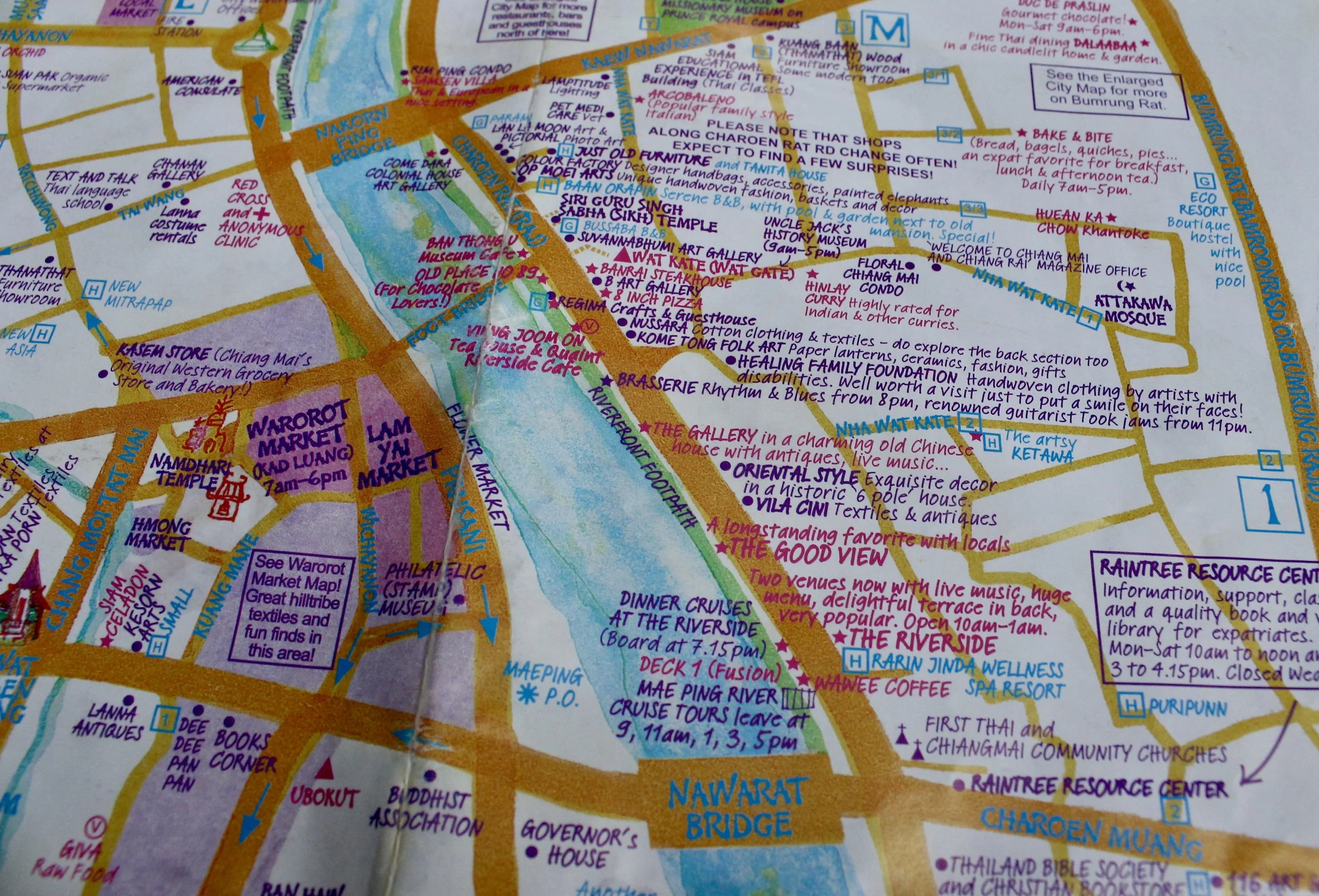Chiang Rai: Cooking in the Jungle
Did you know there are at least 50 ways to use bamboo? As a strong, but flexible wood, bamboo is primarily used for building. Northern Thai villages are constructed with bamboo houses, fences, and furniture. Hill tribes craft bamboo dishes, sleeping mats, and paper.
More surprising to me is how bamboo can actually sustain life. Our Chiang Rai trekking guide, Kai, demonstrated how you only need a machete and a bamboo forest to survive in the Thai jungle. Chop tall bamboo down, and you’ll find fresh rain water. You can eat young bamboo by boiling the shoots. You can also eat the worms that burrow into bamboo—considered a delicacy in Northern Thailand. You can even eat the elephant beetles that cling to bamboo!
Kai devoured all of these treats during our two-day trek.
I had the courage to try the live larvae, but not the beetle al fresco. I could only say “Hakuna Matata" to Timon and Pumbaa so many times.
But thanks to our jungle guides—Suwannee, Kai, and Adom—all our food-related worries went away. Louise and I spent nearly one week in Chiang Rai, a city in the mountainous “Golden Triangle” region of Thailand. There, we learned how to identify, prepare, and enjoy the best of Thai cuisine.
The result? When Louise and I ate our last meal in Thailand, I could recognize almost 80% of the contents. Progress!
Learning the Basics
“Nee arai?” I always asked Thai market vendors, inquiring about what it was they were selling.
The only time I unquestionably understood the answer was when a guy oinked like a pig, pointed to his head, and laughed. “Mai ao, kob kun ka!” No, thank you, I do not want pig brains.
Louise and I had amassed many questions about Thai food. What is that delicious green stuff? How do you eat that? How much should this actually cost? We felt eager to take a cooking course to learn some basics about Thai cuisine and do a better job feeding ourselves.
Thanks once again to low season, we ended up in a private, all-day cooking course. Suwannee, our well-traveled and super smart guide, picked us up to shop for ingredients at the local market. Since it was just us, we got to mix and match menu options. We decided to make Suwannee’s grandmother’s recipe for keng khiew wann gai (green curry with chicken), tom yam goong (hot and sour prawn soup), som tam (green papaya salad—my future dish-to-pass), and fak thong buat (pumpkin in coconut milk).
As Suwannee led us to the organic food stalls, she also answered our questions about what was what. She bought us treats along the way, like soy bean donuts and green chili paste, so we could sample the things that piqued our interest. The two hours we spent at the market with Suwannee was like finishing the last chapter of a 500-page suspense novel. We solved so many mysteries!
The class itself also exceeded expectations. Louise ate something with eyes, and I found my new favorite way to enjoy pumpkin.
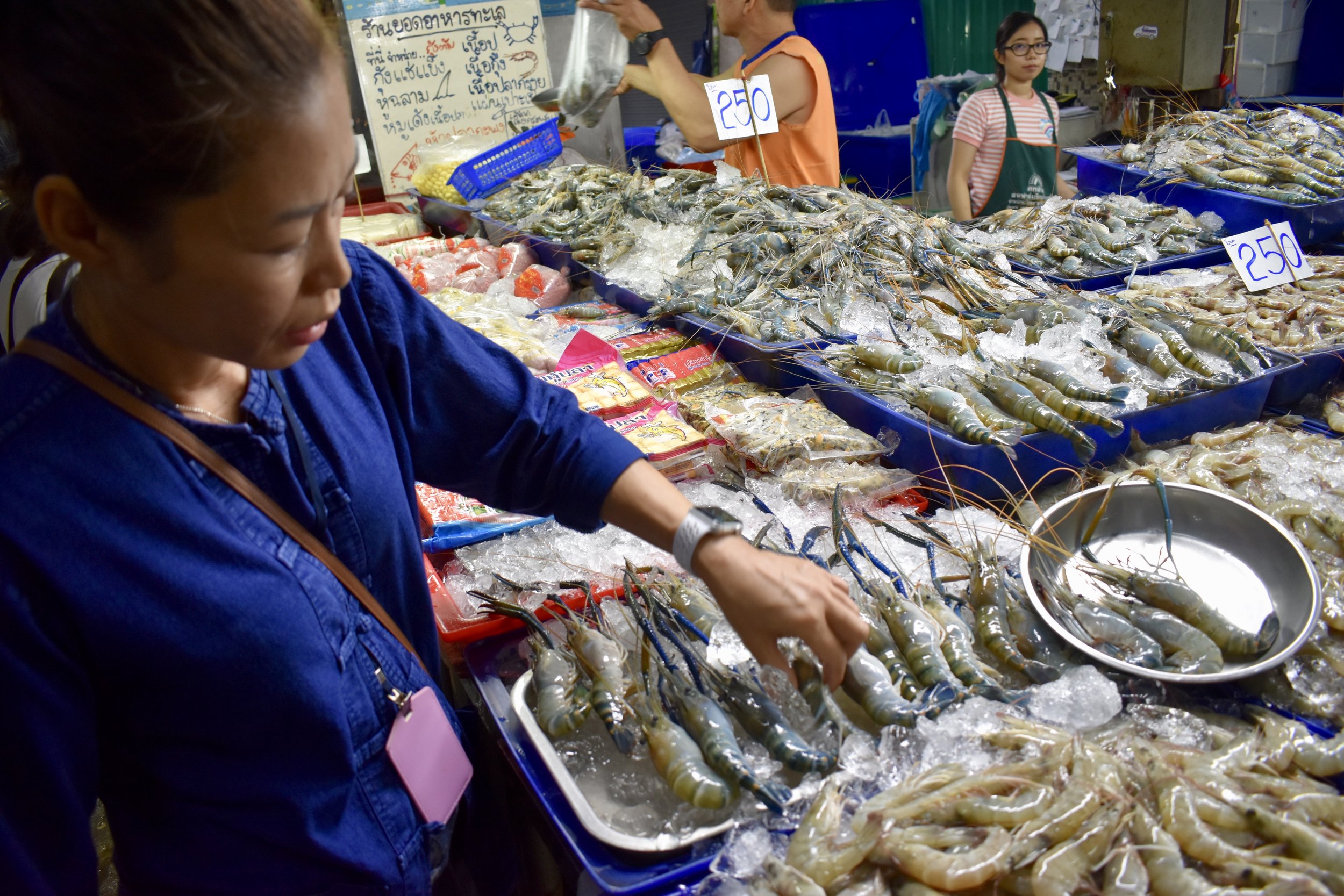
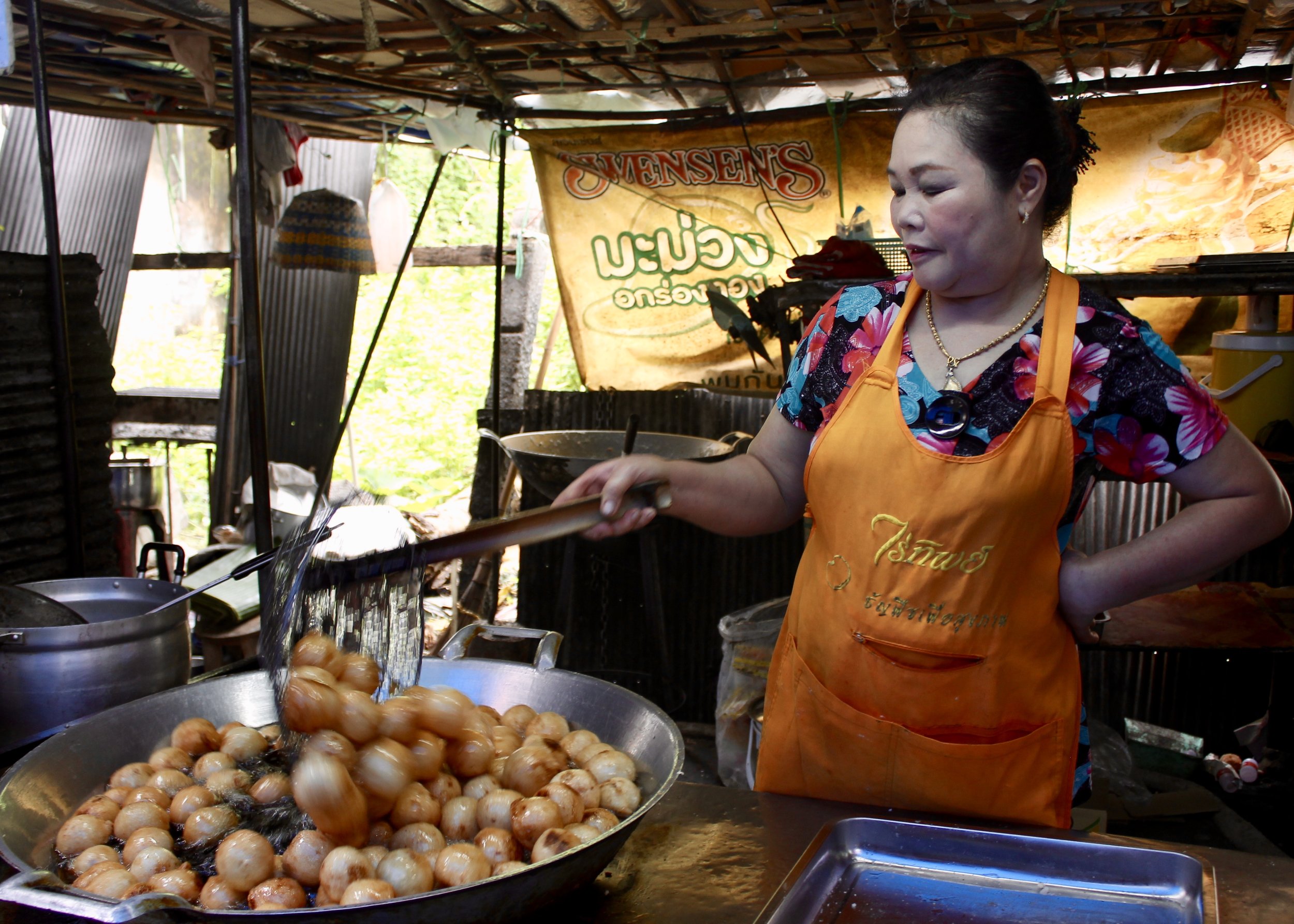
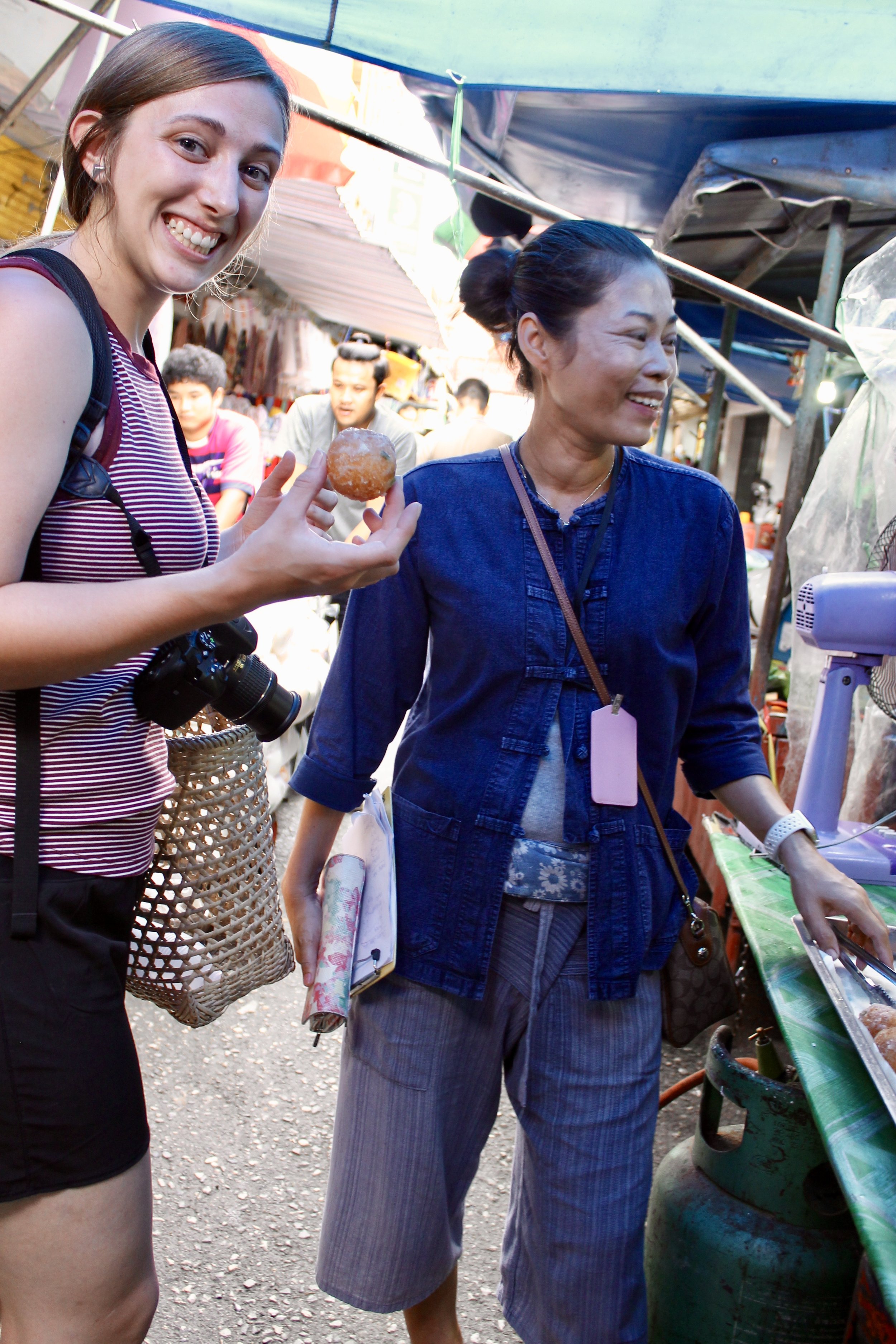
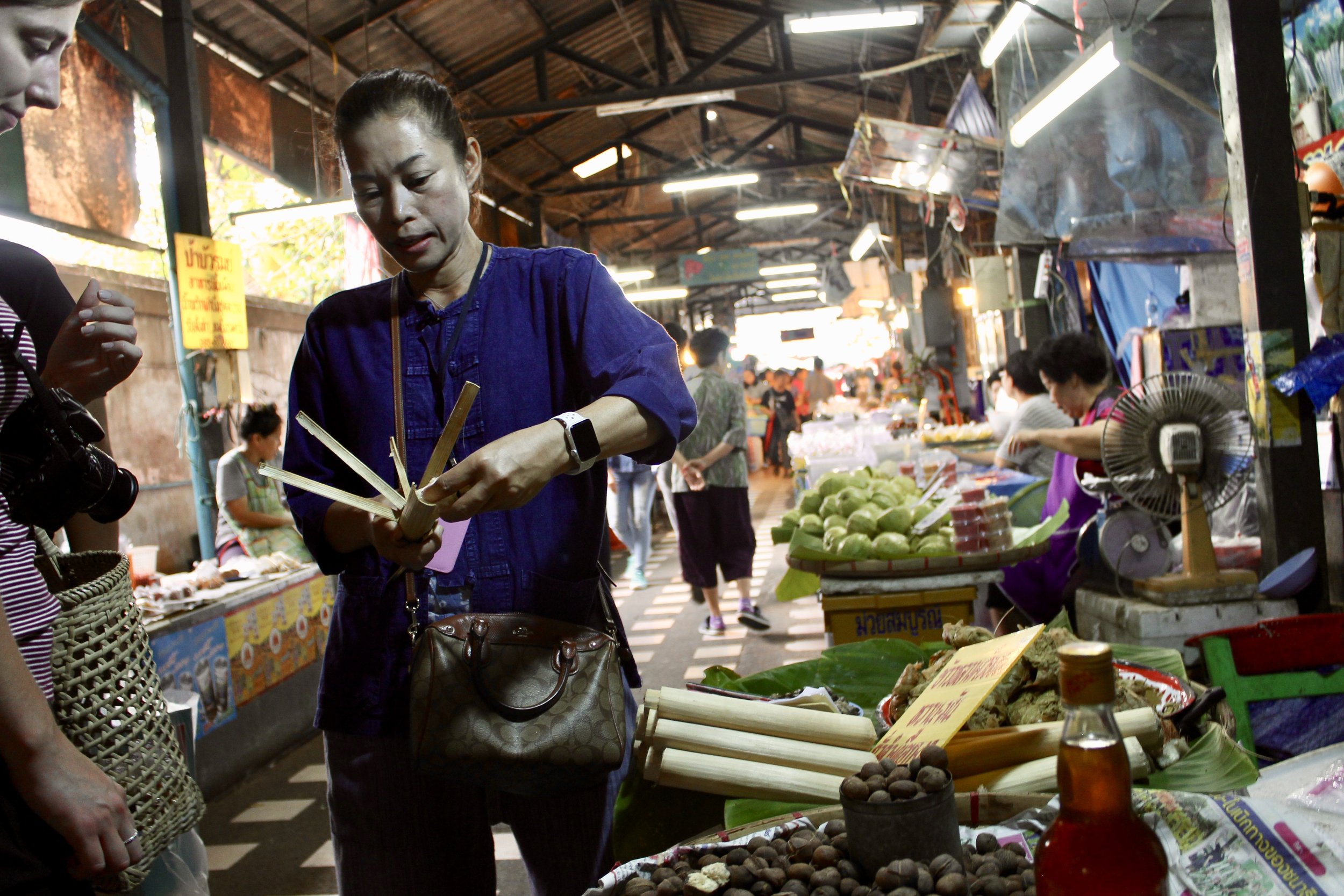
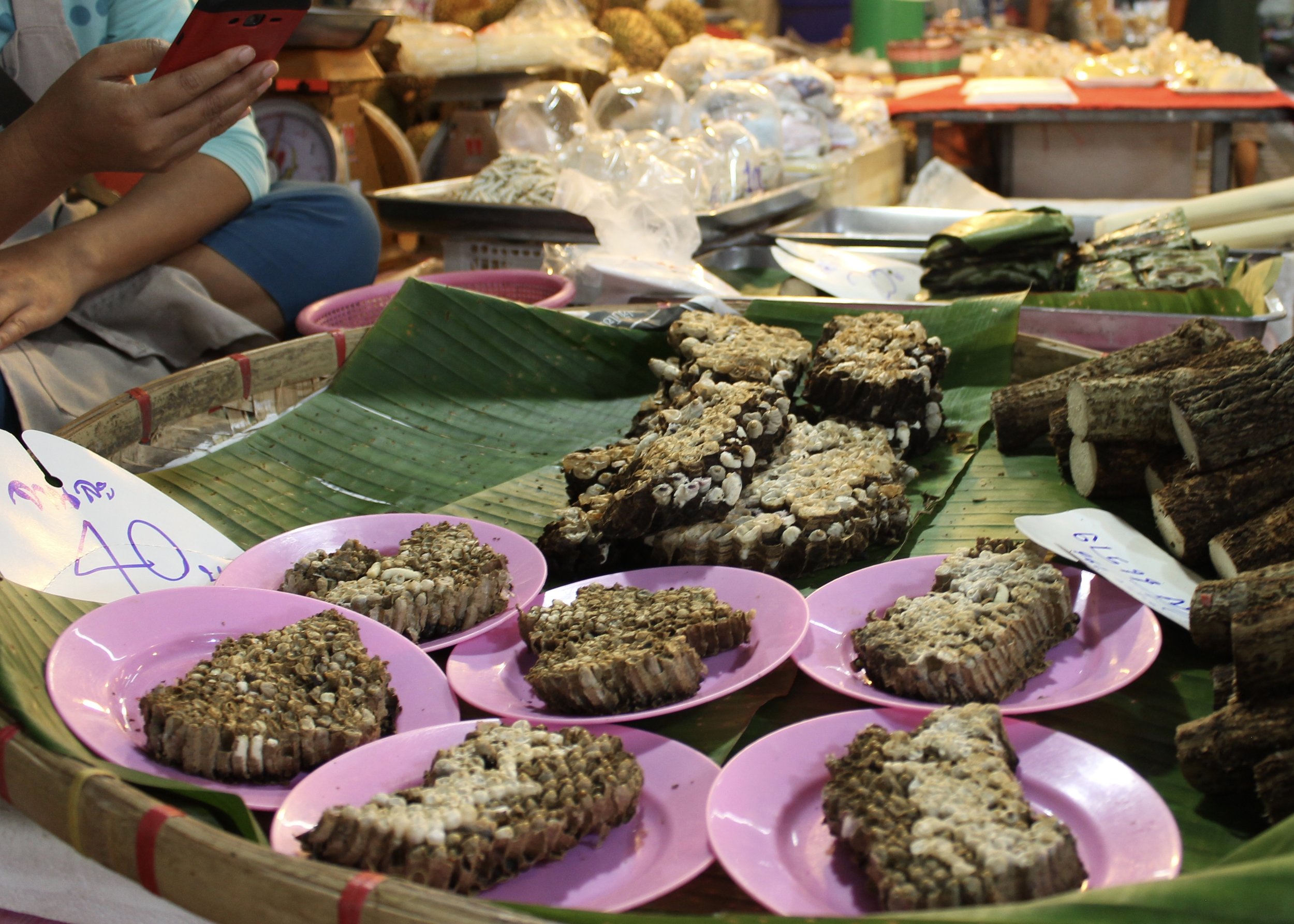
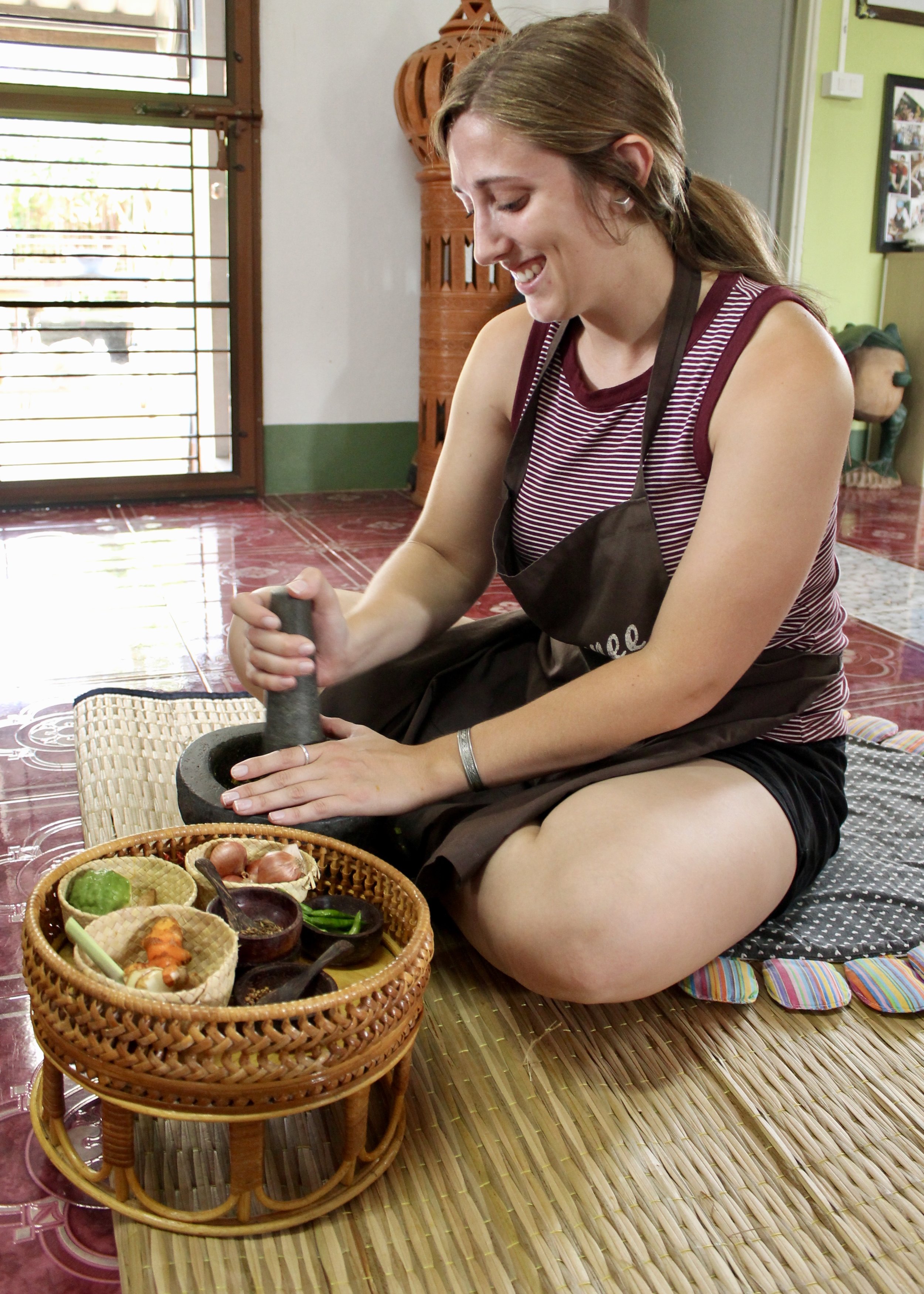
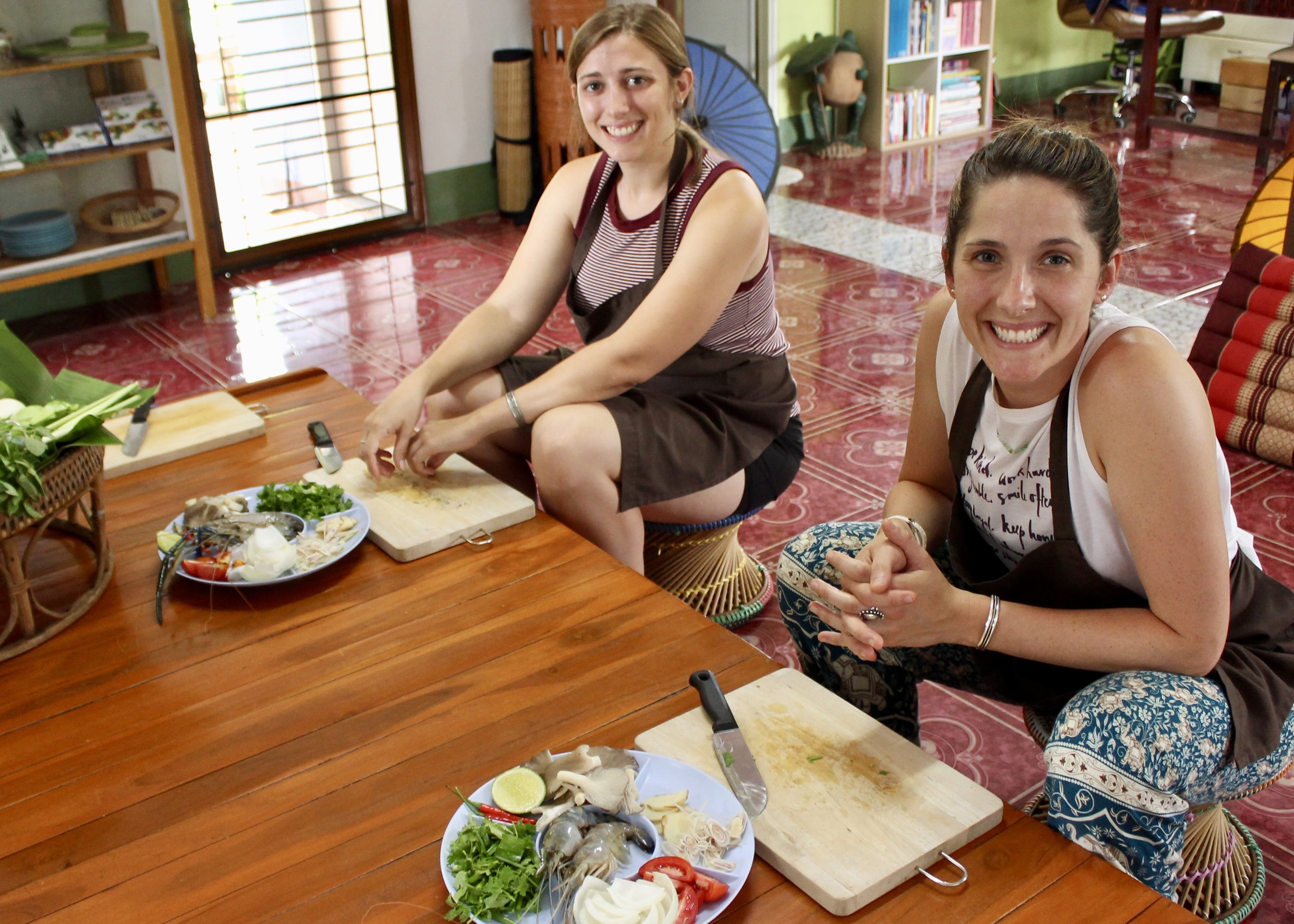
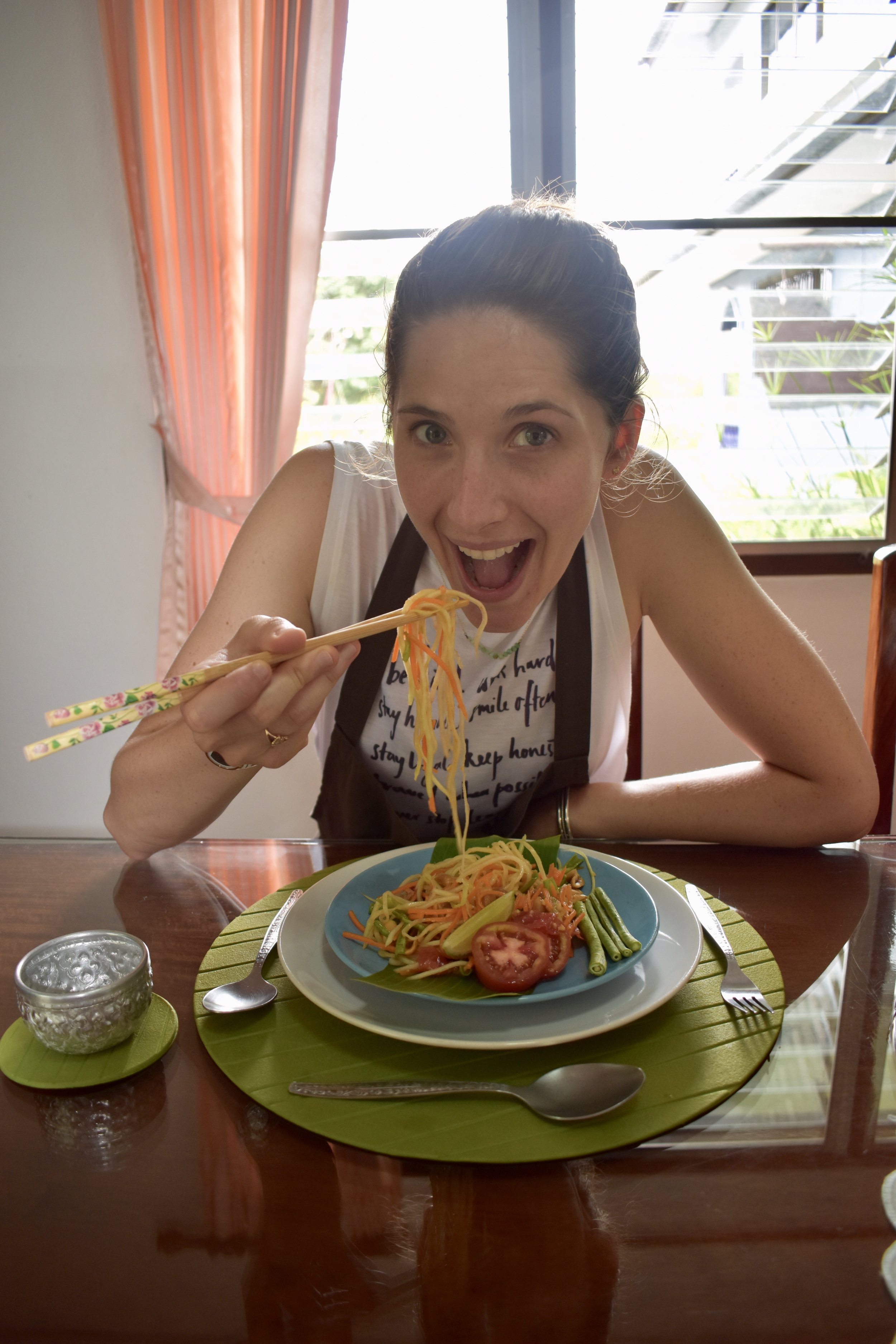

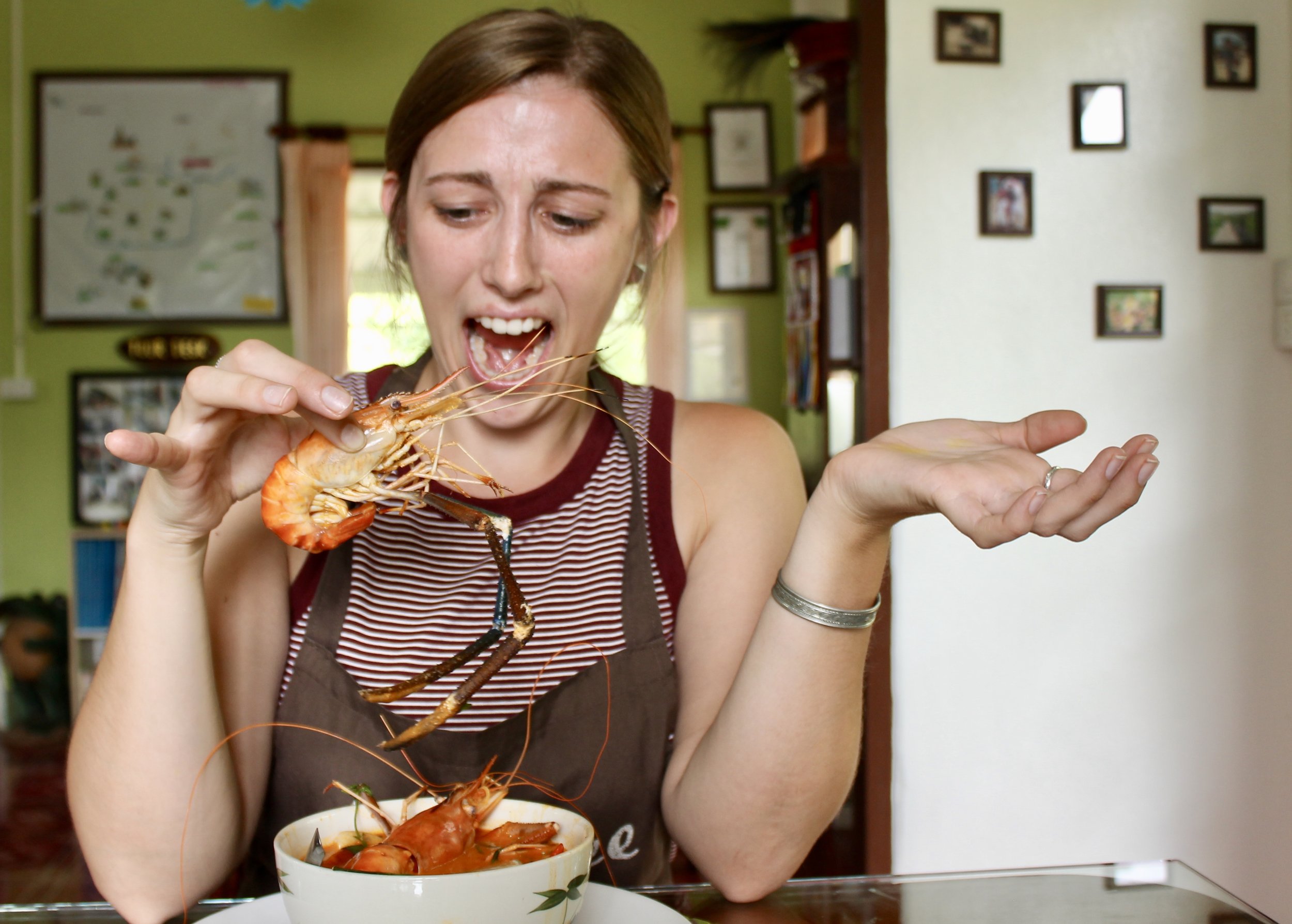
Foraging the Flora and Fauna
Suwannee is unassuming, but we soon realized she is a serious boss lady in Chiang Rai. She runs a few businesses and knows everyone in town, including the most ethical trekking guides. Most treks incorporate elephant riding and exploit hill tribe villages. We asked for Suwannee’s help in finding a guide we’d feel comfortable supporting. Suwannee connected us with Kai, a farmer and freelance guide who is now trying to expand his own trekking company, Bamboo Tours.
One good decision led to another. In the way Suwannee enlightened us about food in the city, Kai blew our minds about food in the country. Those beautiful palm-tree-like plants I’ve been ogling? Those are banana trees! And they can quickly be destroyed by children playing on their own actual jungle gym.
Kai took us from rice paddies to tea plantations, from bamboo forests to waterfalls, and from Lissu to Akha to Lahu villages in only two days. We collected food as we went, borrowing pineapples from his friend’s farm, taking some Assam tea, and uncovering bamboo worms in the jungle.
It was humorously humid hiking the first day. I welcomed the cold bucket shower at the Lissu village we called home for the night. Our hosts showed us lovely hospitality, most notably in the form of a whole bottle of homemade rice whiskey (served to us all night in bamboo shot glasses).
The finale of the trek was lunch on the second day, cooked exclusively with bamboo. Bamboo kindling. Bamboo pots. Bamboo cups, chopsticks, serving platters, table, and chairs! Kai and our Lissu host, Adom, crafted everything from what we (mostly they) foraged in the jungle.
I never reveled in a meal quite like this.


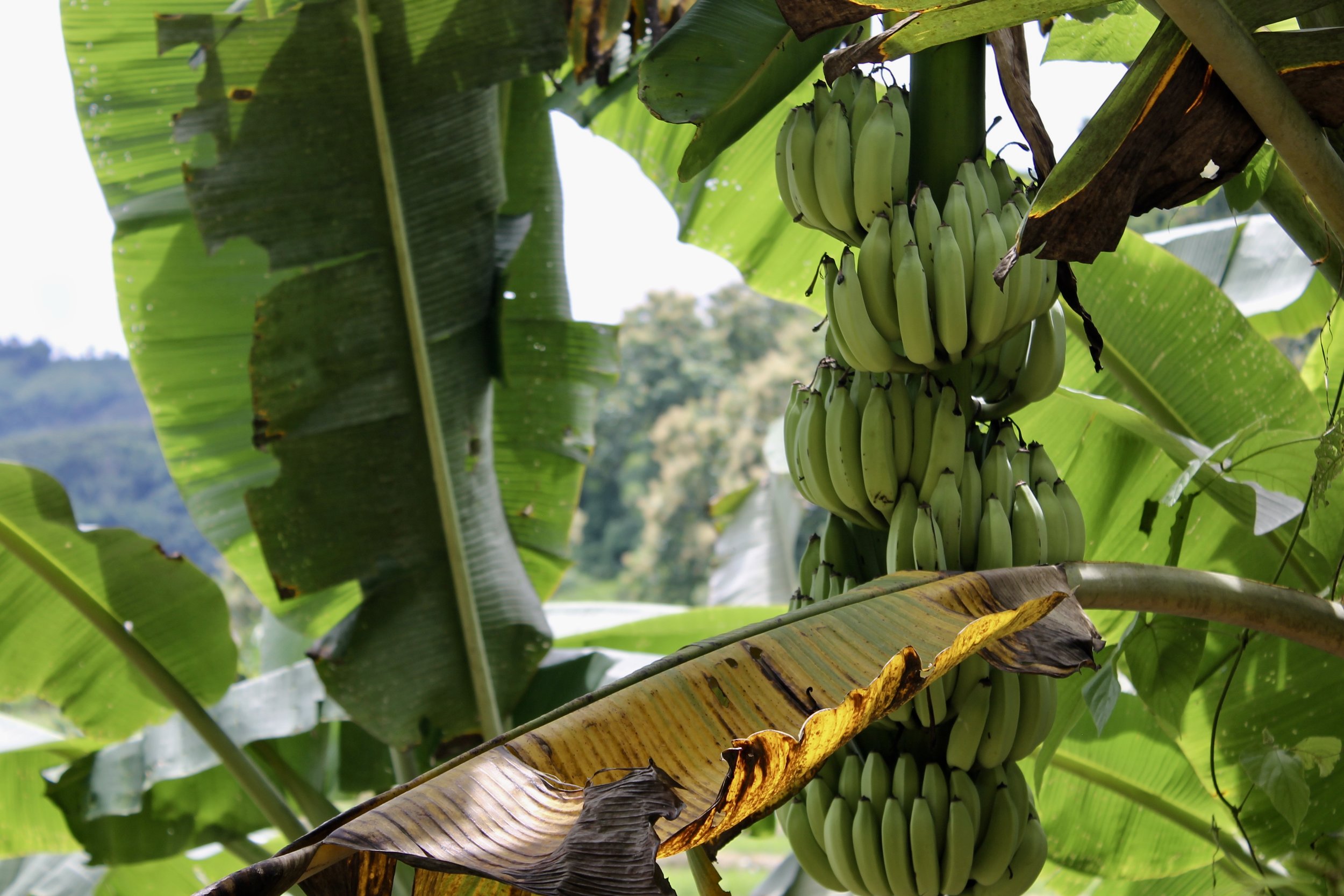
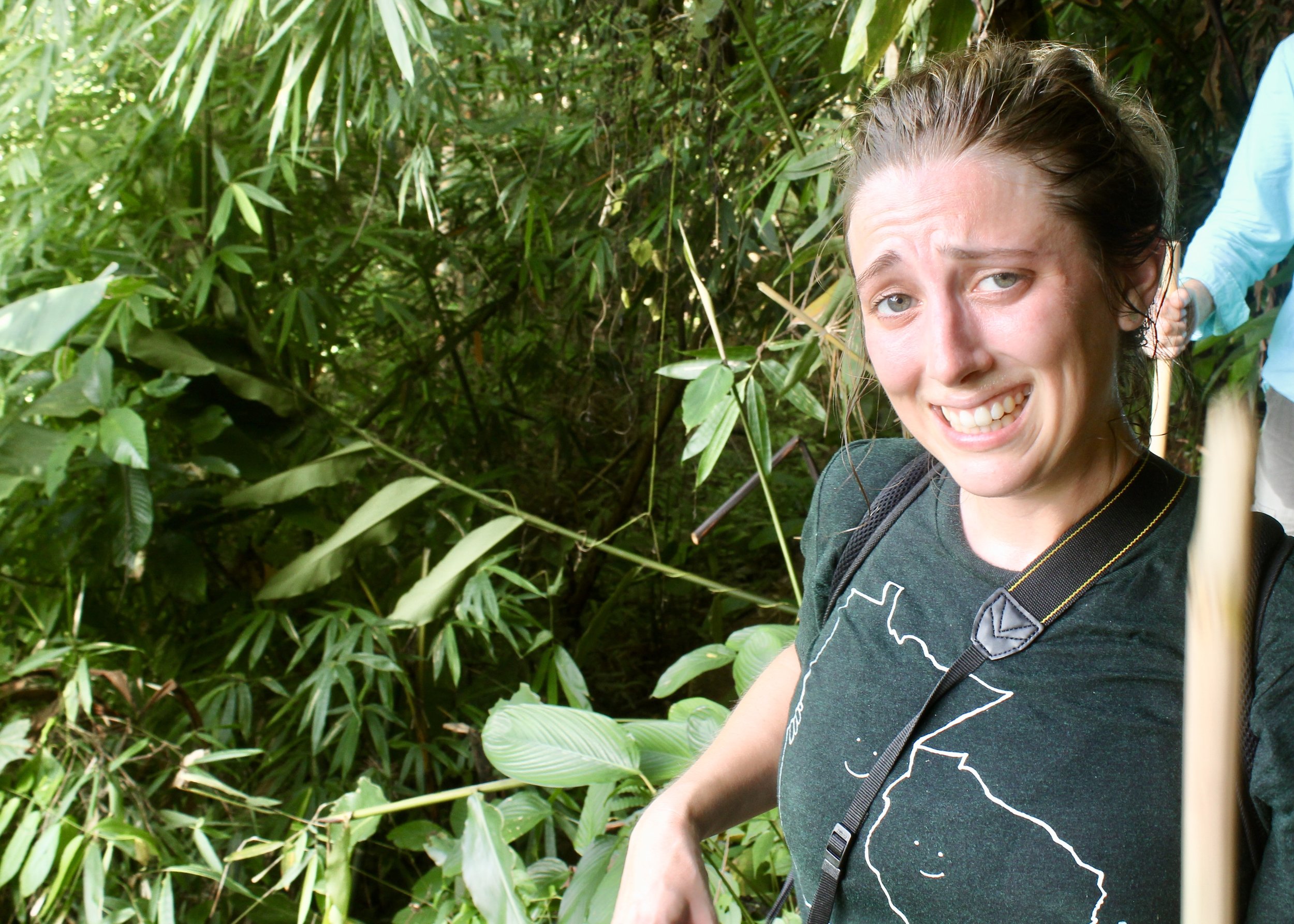
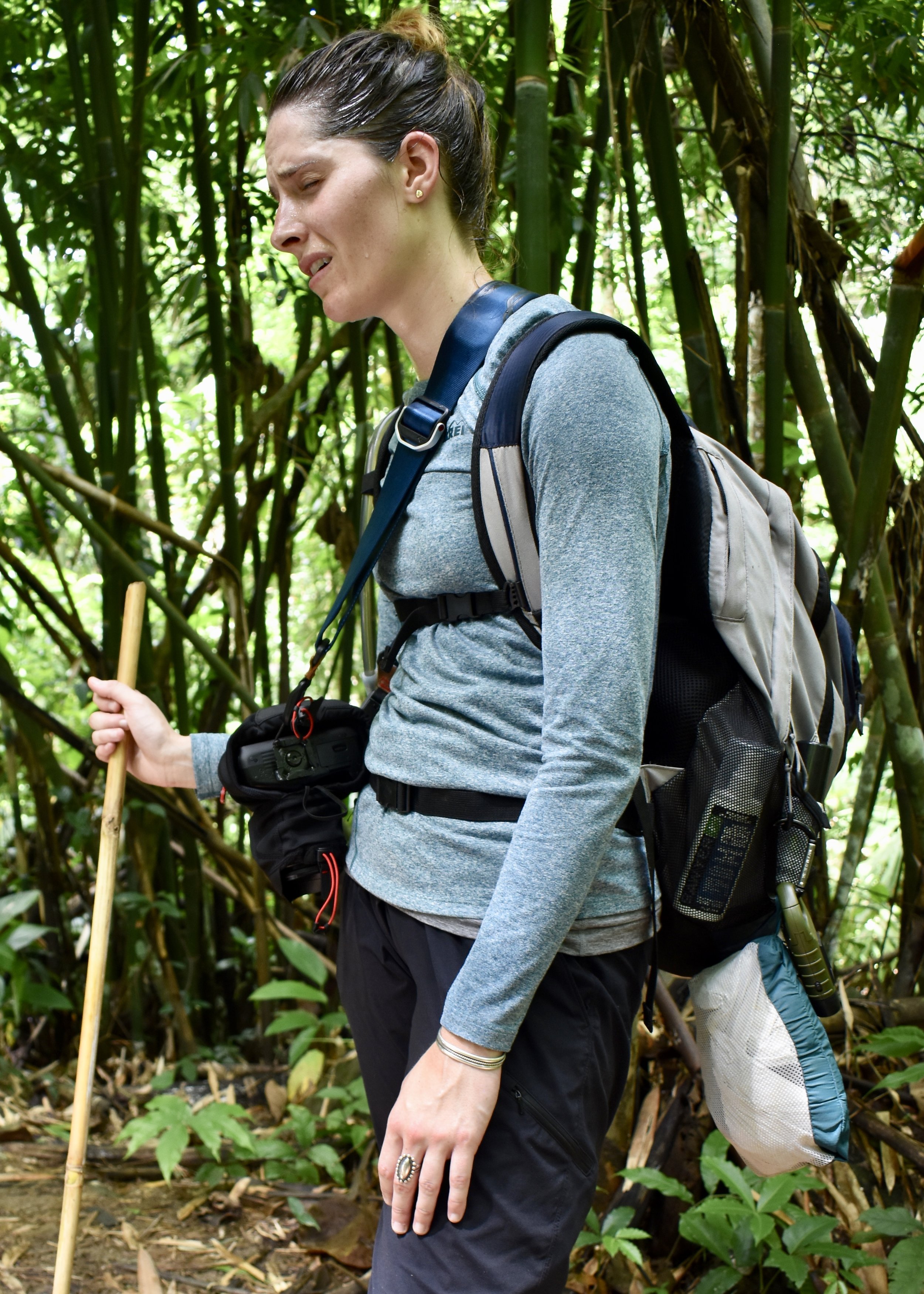
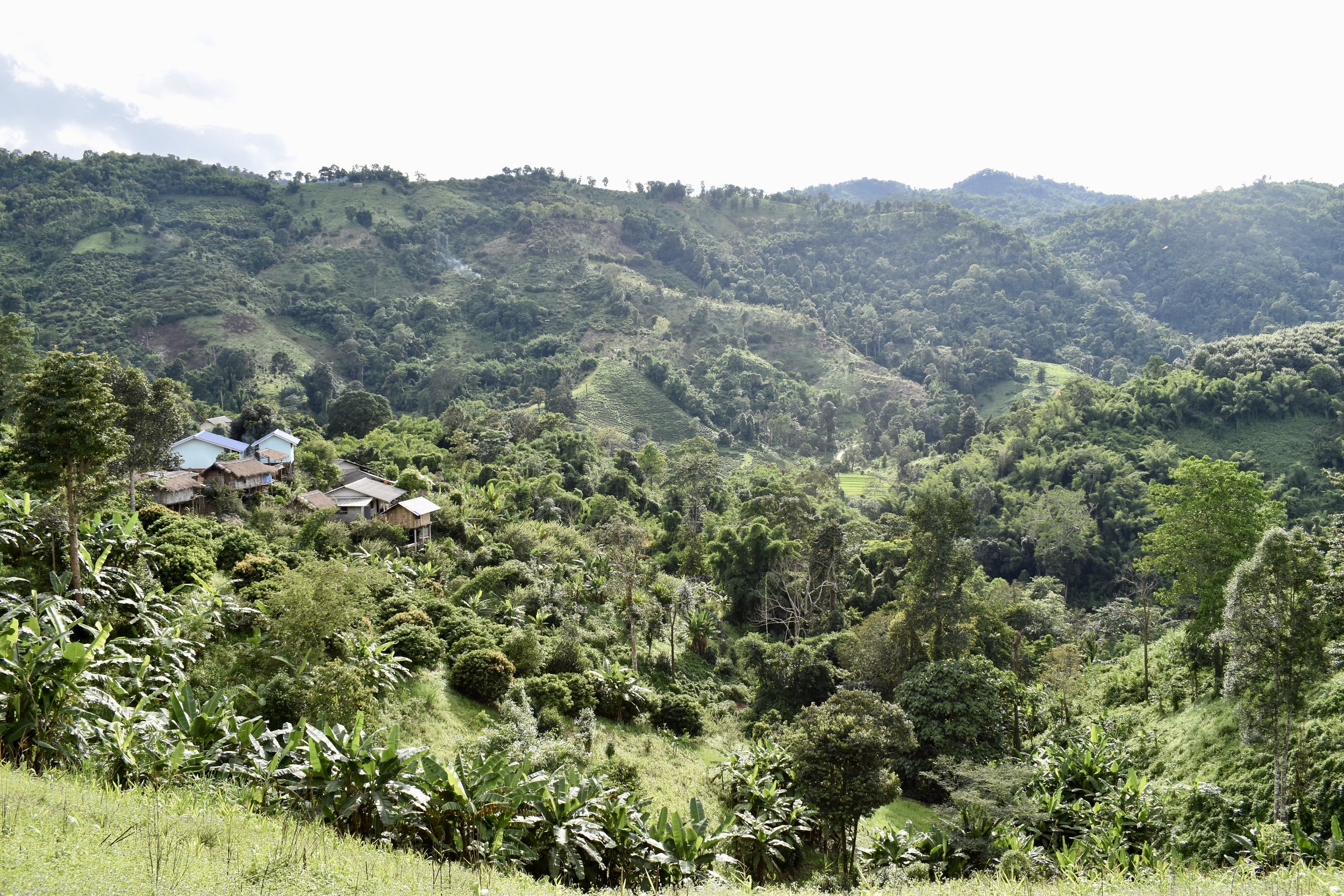

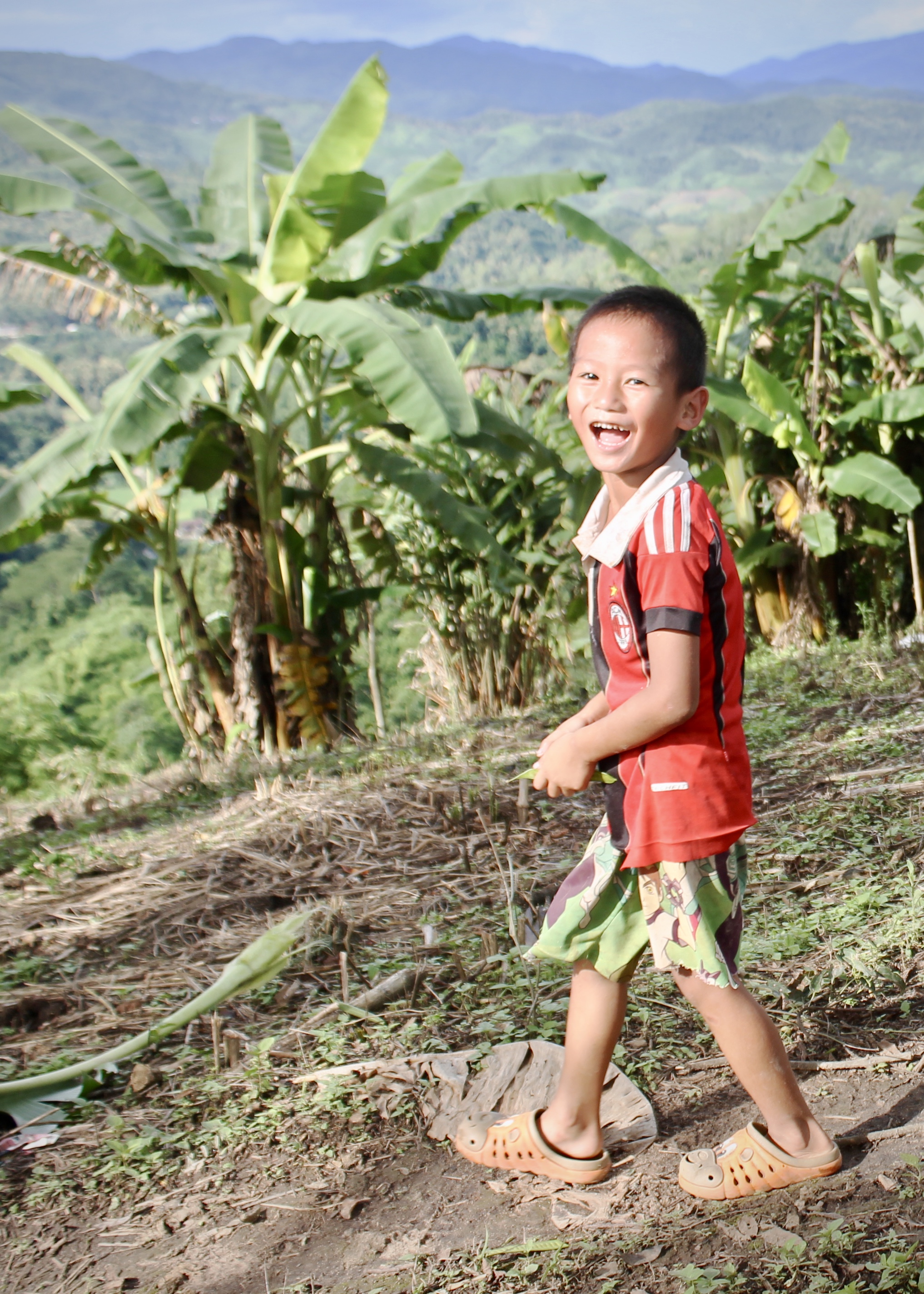
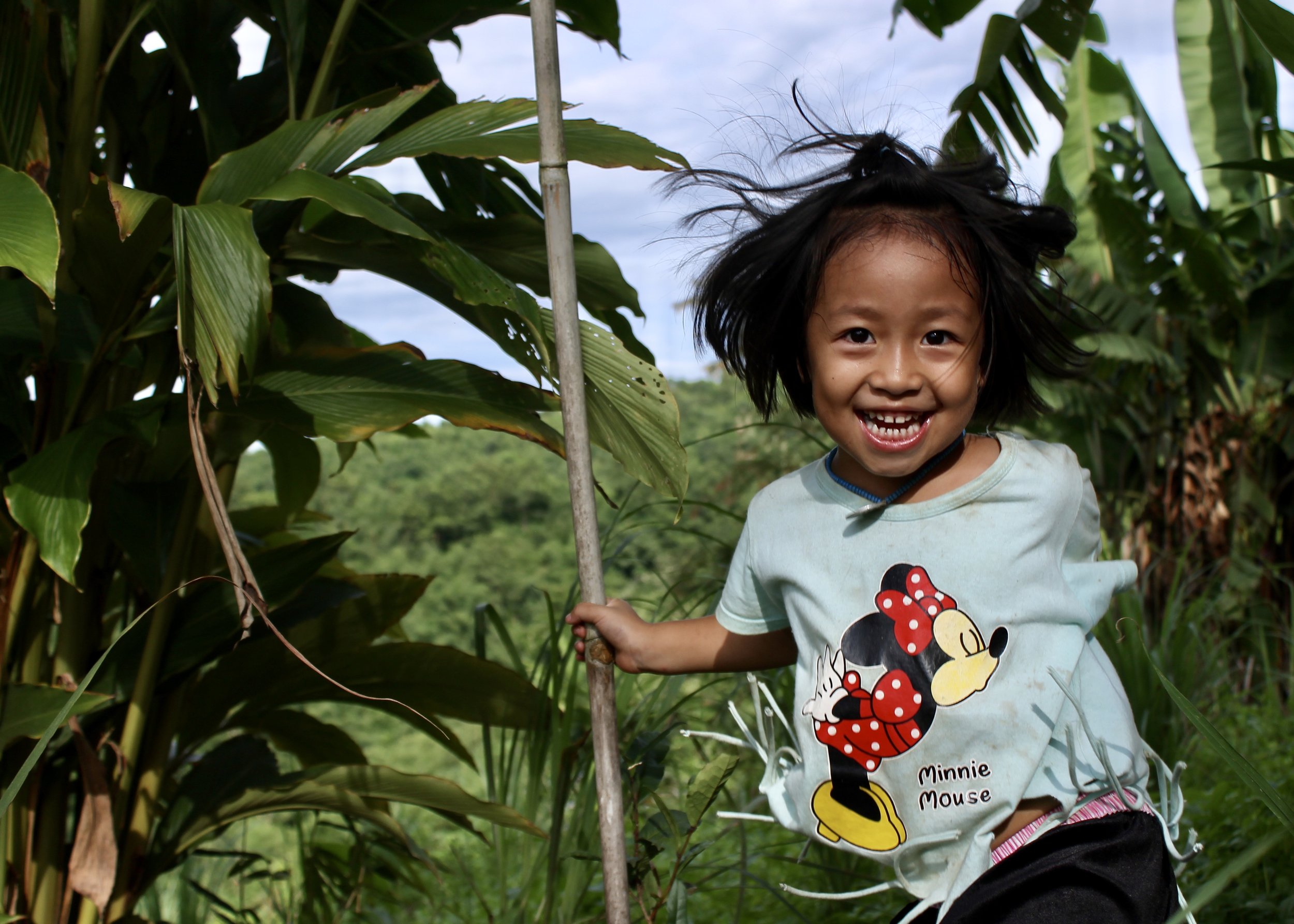
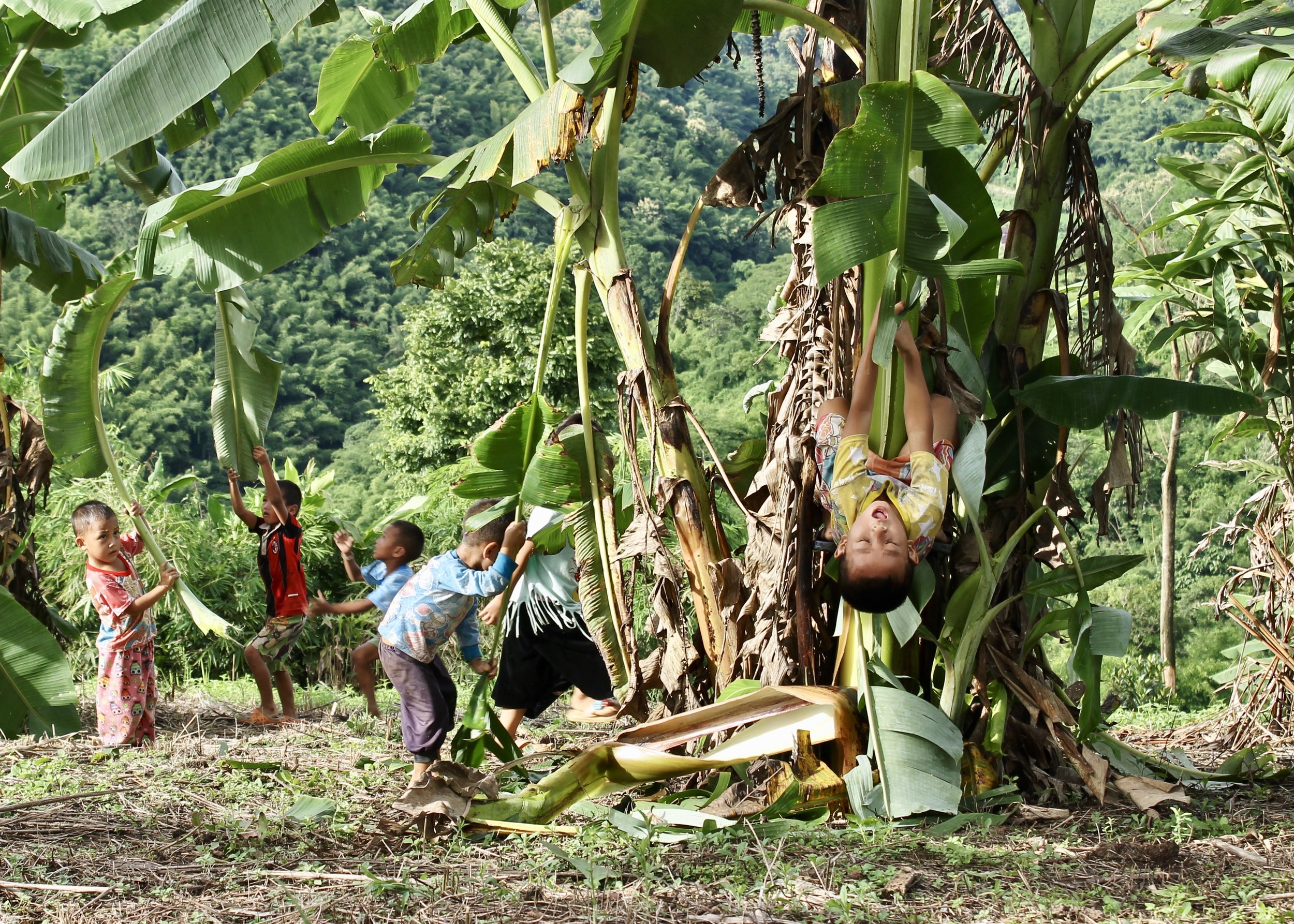
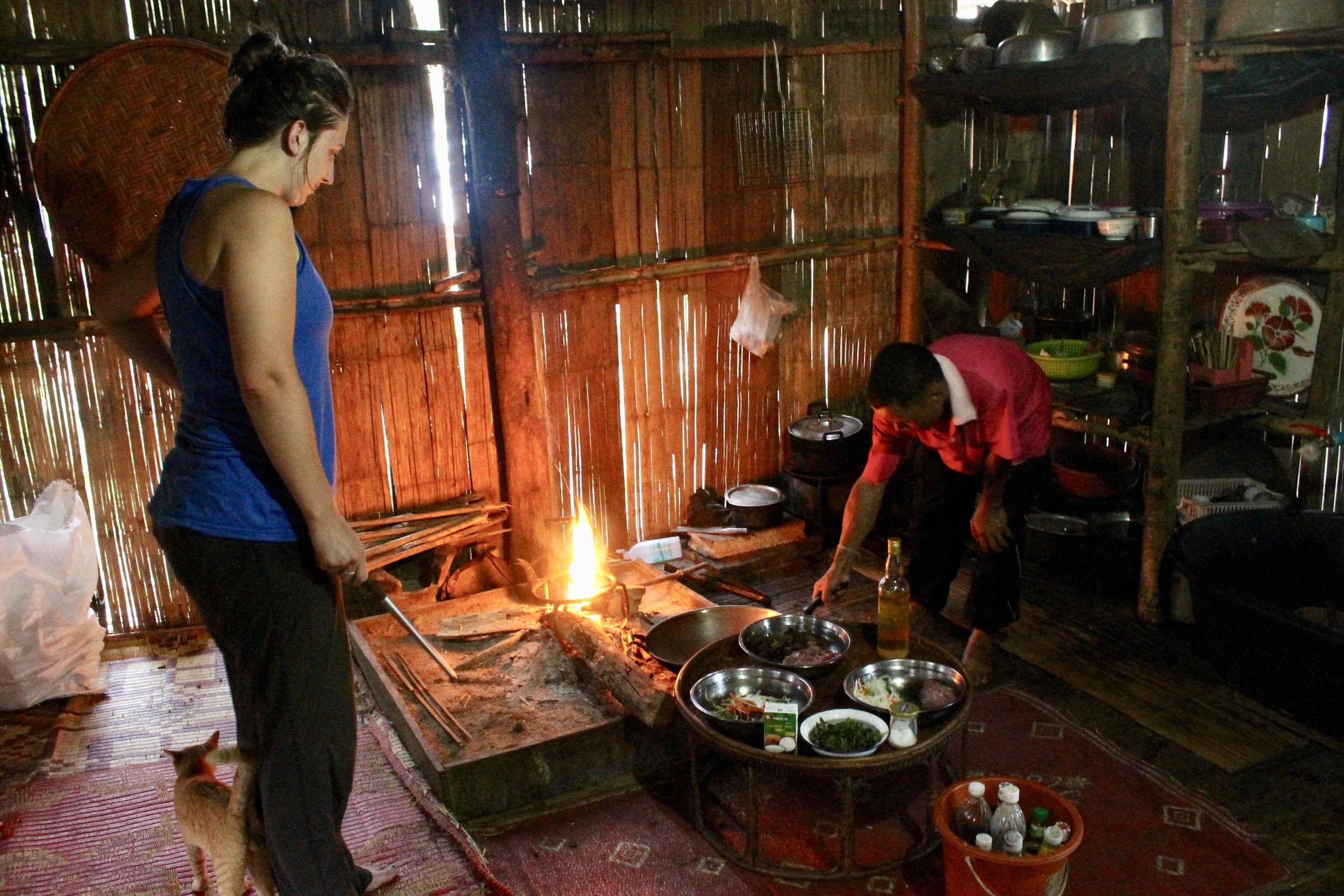
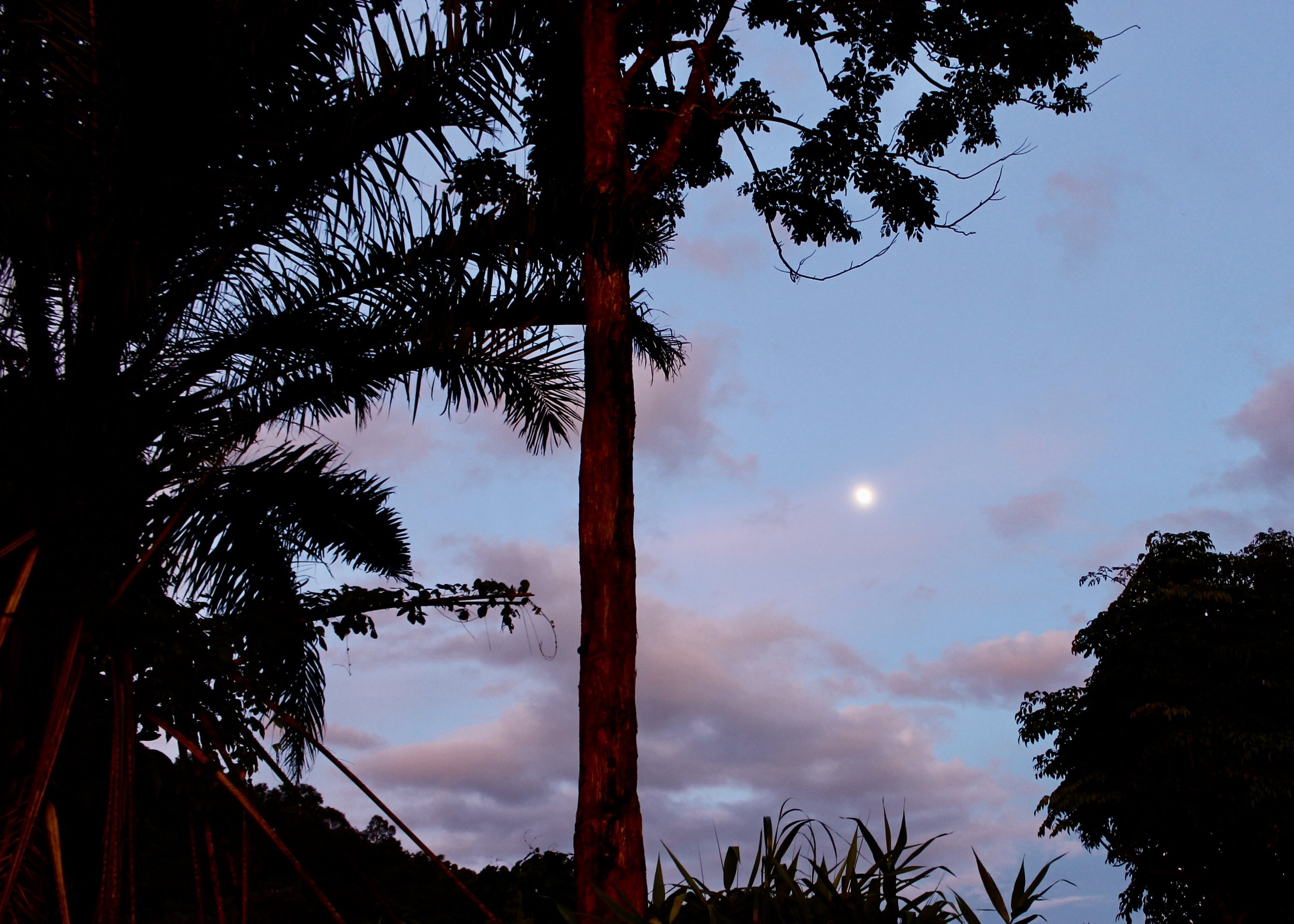

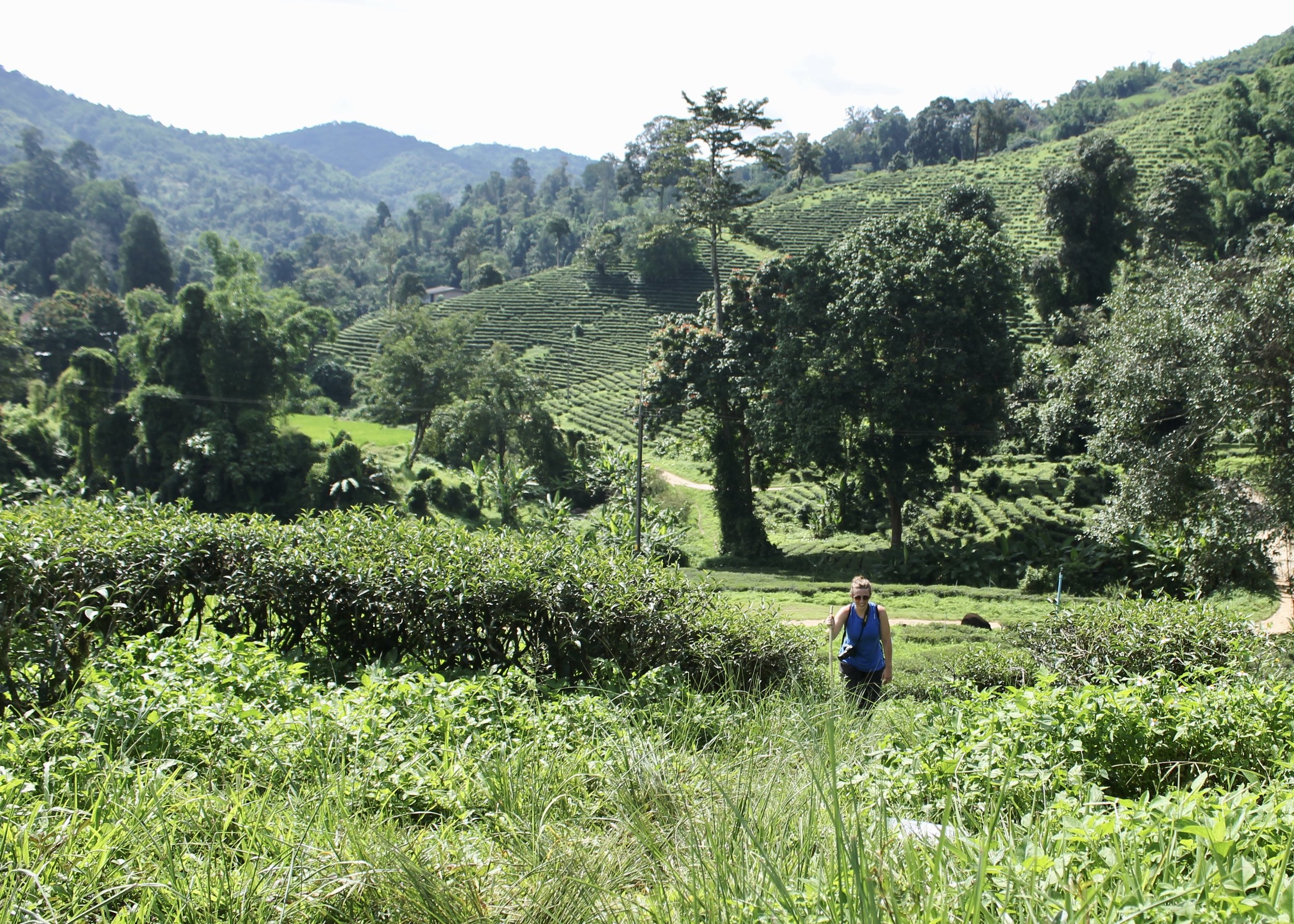
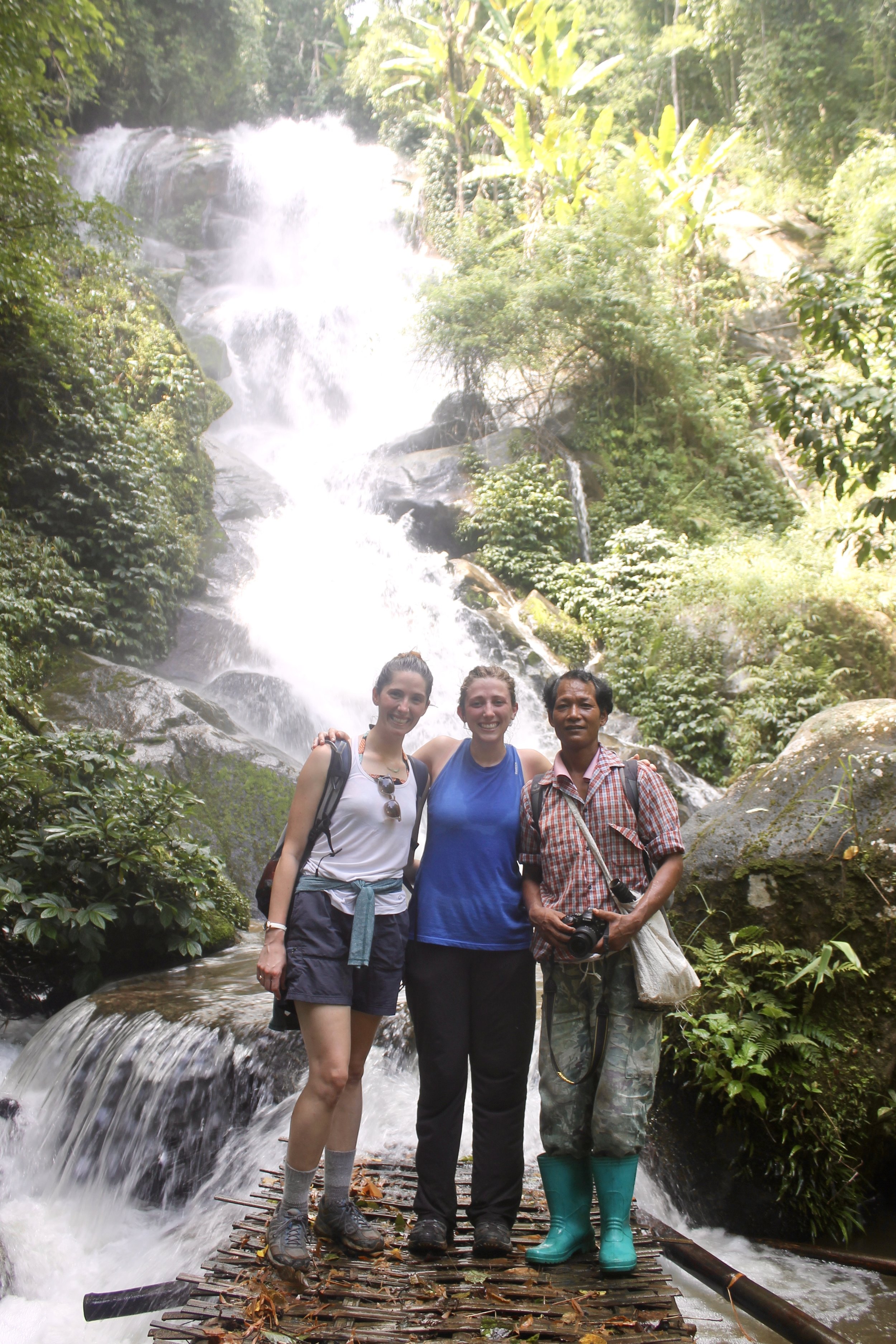
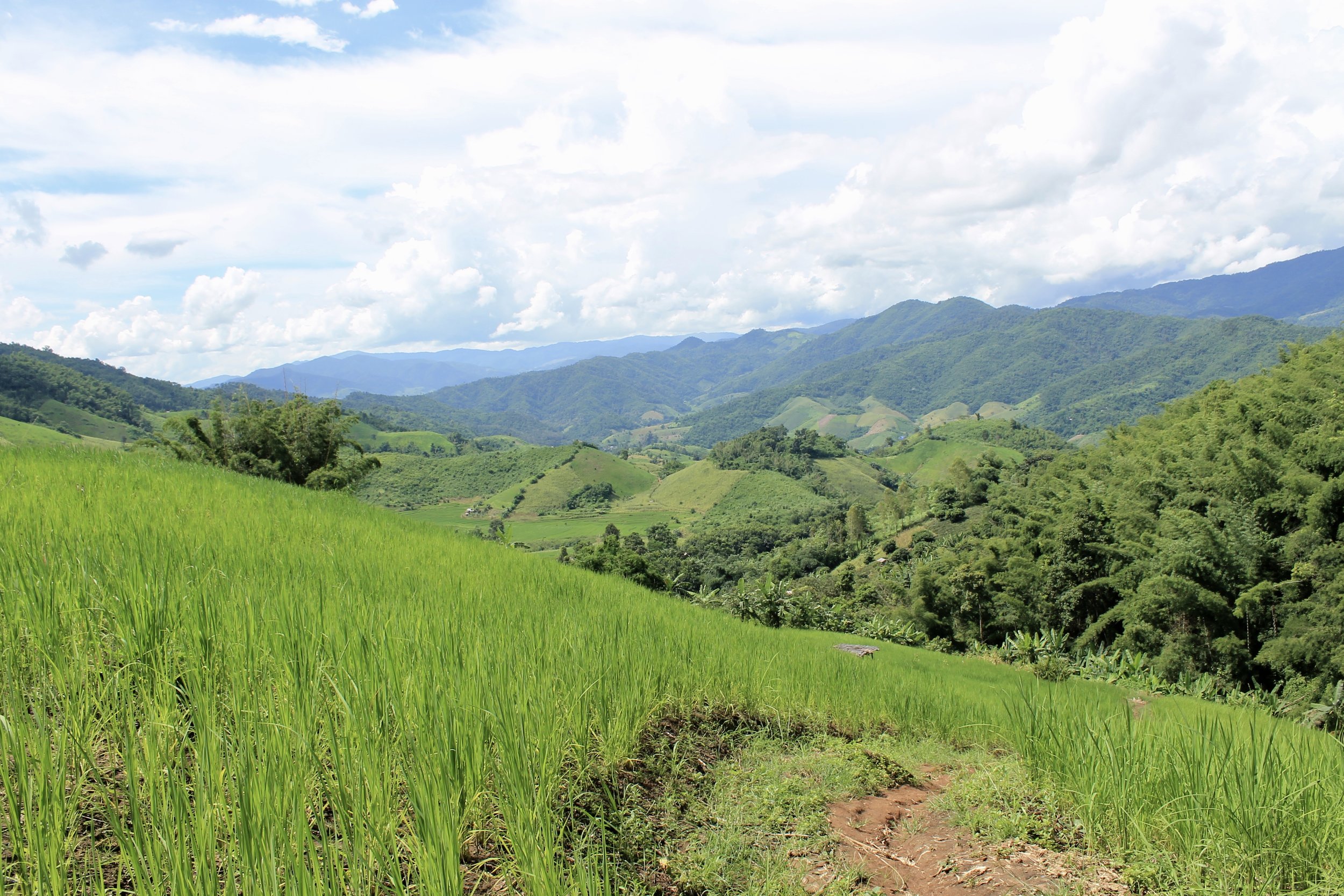
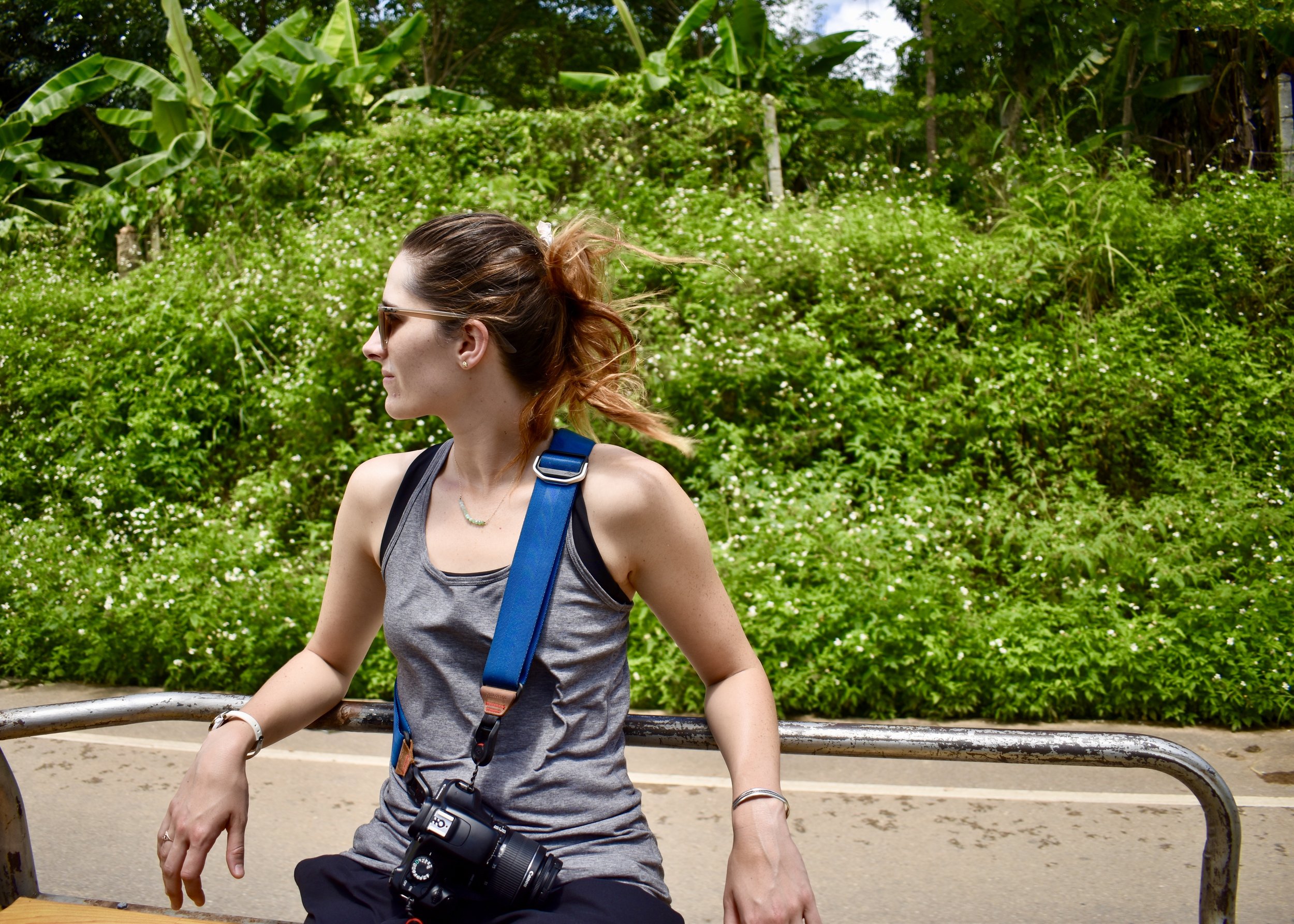
By Mel Grau

